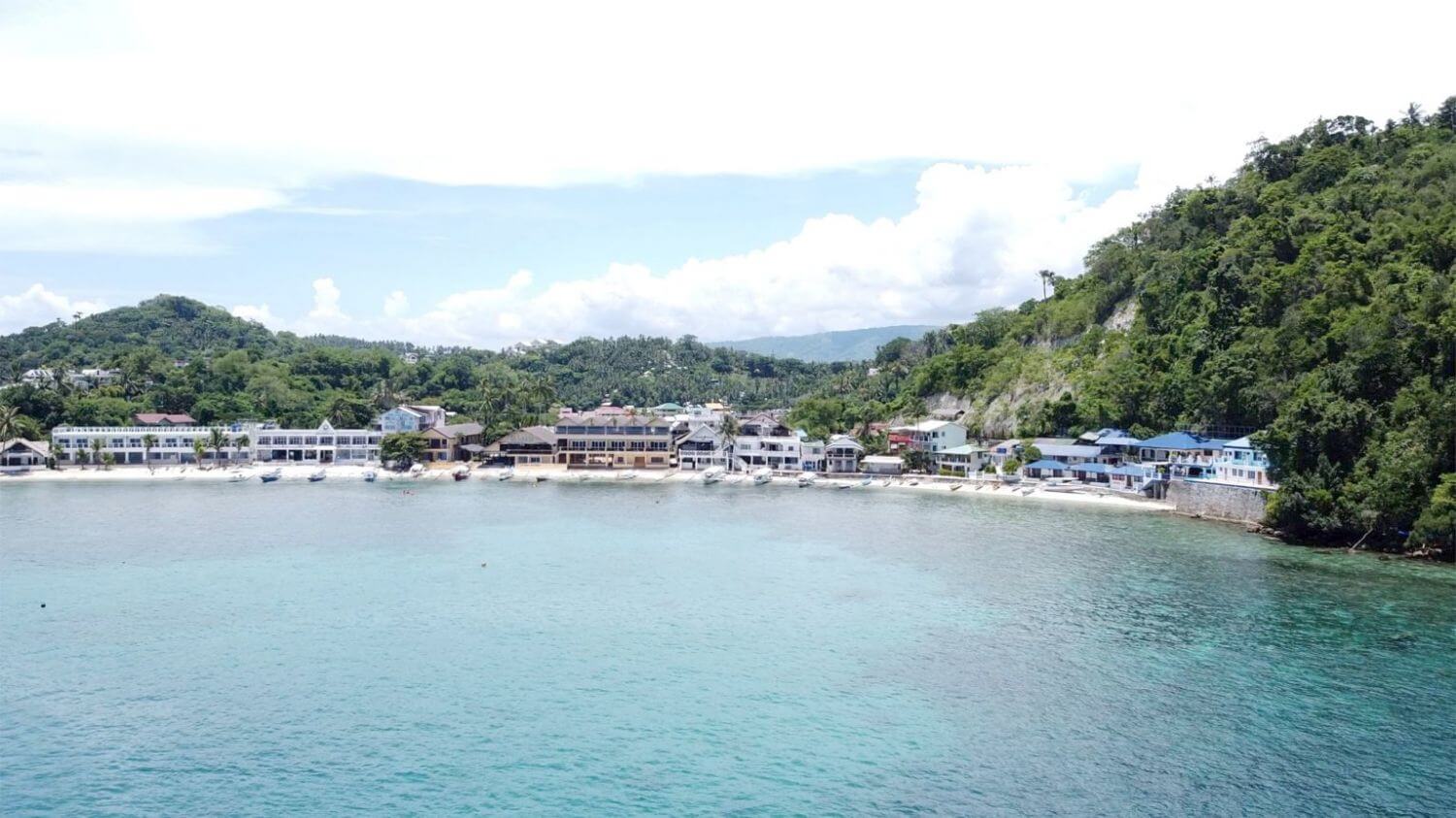
Puerto Galera Diving: Vital Guide
PUERTO GALERA by Diving Squad - VITAL GUIDE
Easy to reach and cheap to stay at, Puerto Galera offers some of the most diverse scuba diving in the Philippines.
There’s a spectacular variety of dive sites from shallow water coral gardens suitable for beginners to exciting deep drift dives, seagrass beds, wreck dives, night dives and muck dives.
In my experience, nowhere else in the Philippines boasts so many different types of dive all so close together.
Around the coral reefs and shipwrecks, divers can see many green sea turtles, banded sea snakes, nudibranch, giant frogfish, reef fish and schools of batfish.
The muck dives offer something different entirely with flamboyant cuttlefish, blue-ringed octopus and giant clams.
When it comes to asking anything about diving Puerto Galera – I’m your man!
After all, I lived there for half a year during 2020 as one of just two remaining guests who stubbornly remained at Scandi Dive Resort during the Covid Lockdowns!
I used this time to get to know the place inside out and have since create this epic guide for divers headed to Puerto Galera.
Here’s your first bit of vital info: People say “Puerto Galera diving” but you probably don’t want to stay in the busy centre of Puerto Galera town!
Most dive resorts are actually located some 5km away on the much quieter, more scenic Sabang peninsula; off the coast of which lie the majority of dive sites.
So without further ado, let’s dive into all there is to know about diving Puerto Galera so you can scuba there like a boss!
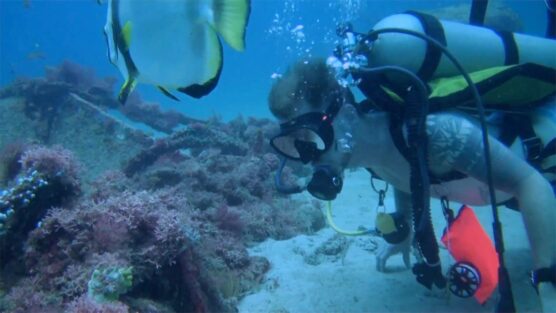
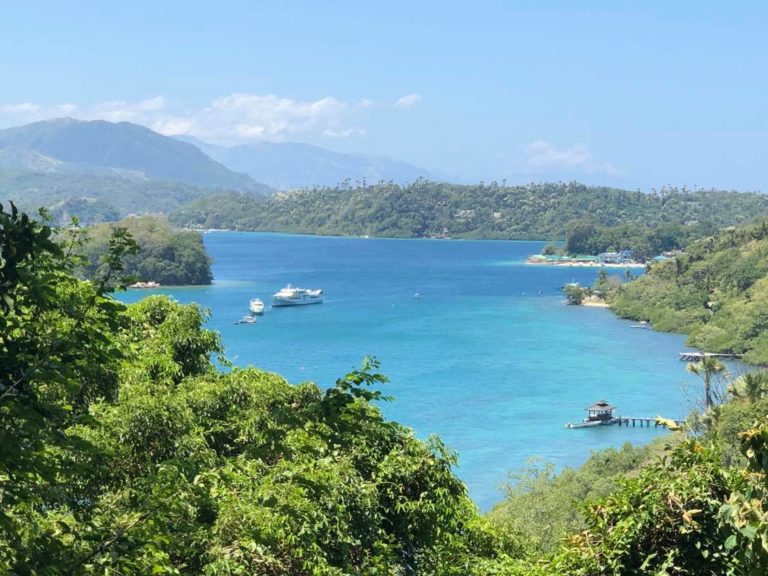
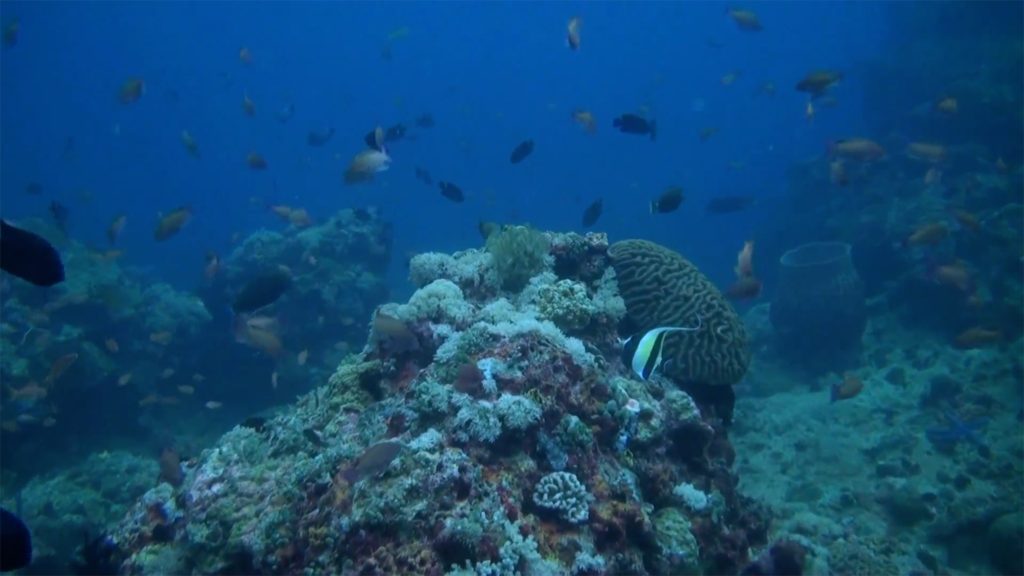
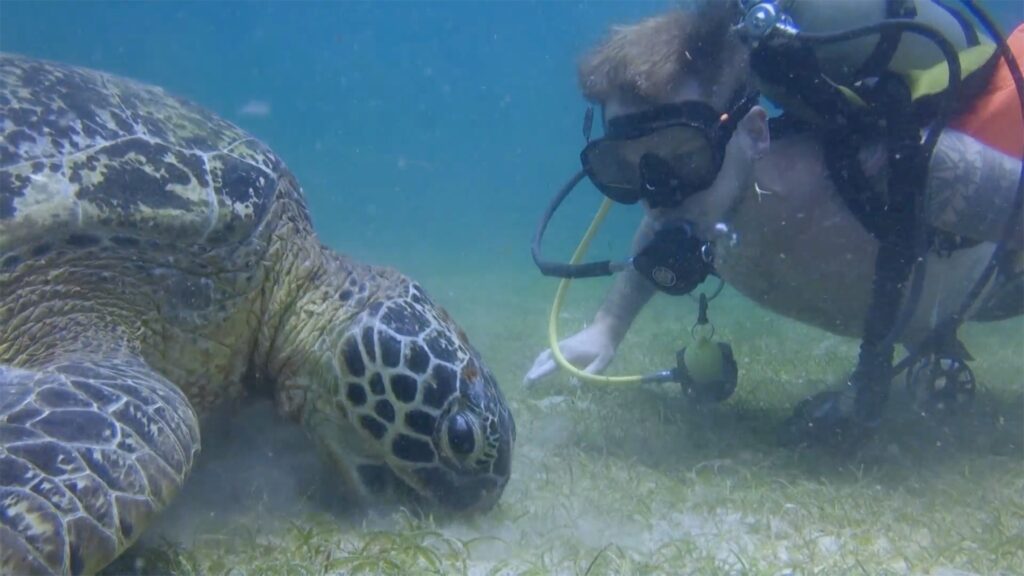
^ See that guy having a long debate with the Green Sea Turtle about the taste of sea grass? That’s me! (Alex, Creator of Diving Squad!). Currently, I’m living in the Philippines – specifically Panglao!. If you’d like to go for a dive together, grab a beer or just shoot the shit about Philippines diving, holla me on Whatsapp: +447812648968
Best Puerto Galera Dive Resorts
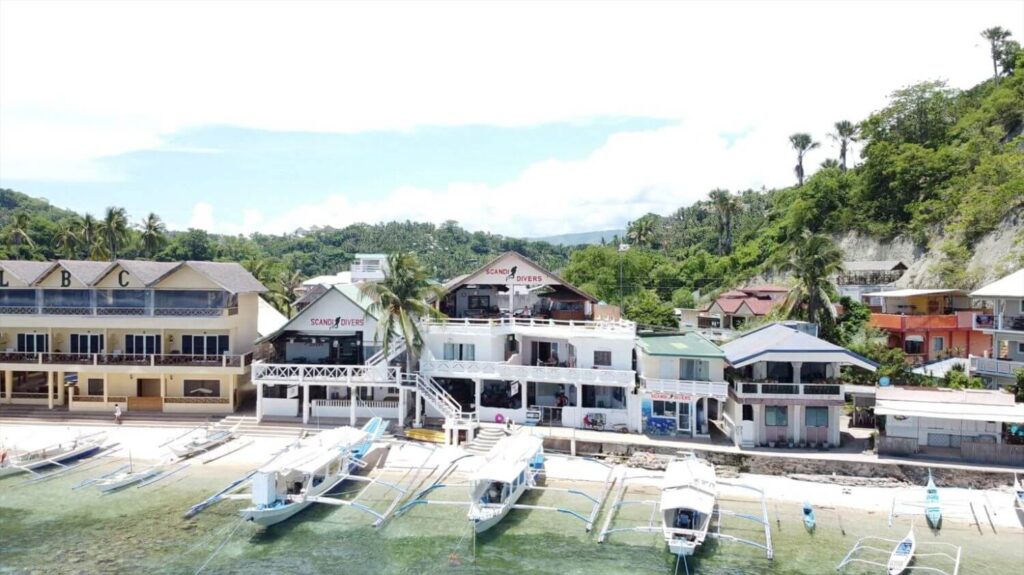
Before we dive into what it’s like diving Puerto Galera; let’s quickly go the best places to stay for scuba divers. Most dive resorts are located along the beachfront of the Sabang peninsula which can be divided into 3 beaches:
- Sabang Beach: Located slap-bang in the middle of Sabang, it has the most bars and restaurants but is also the noisiest.
- Small Lalaguna: 5 minutes westwards walking from Sabang Beach, this is where most dive resorts are located.
- Big Lalaguna: On the far western side of Sabang; this is the quietest and cleanest beach yet still only 15 minutes walk from the bars and restaurants of Sabang Beach.
5 Best Dive Resorts in Puerto Galera:
1) TOP PICK: Scandi Divers (Big Lalaguna, $$$): I cannot overstate what an amazing dive resort this is; the staff are so friendly and helpful. I really felt like part of the family during my 6 month stay.
Located on Big Lalaguna, Scandi Divers Resort is in a quiet and scenic location; the rooftop restaurant is top-notch; the rooms spacious and clean and the dive centre meticulously well run with awesome instructors who know the many dive sites of Puerto Galera inside out. Check out my full review here.
2) Cheapest: The Blue Pagong: (Sabang Beach, $): Of all the places you can stay on the Sabang peninsular; The Blue Pagong is the cheapest. It’s located 200 meters away from Sabang beach; only a minutes walk from the bars and restaurants yet still far back enough to be away from the noise. Each apartment features a private terrace and a dining area. Noice!
3) Arkipelago Beach Resort (Small Lalaguna, $$): This dive resort offers a stellar combination of affordability and class: with an in-house dive centre, swimming pool and spacious rooms. It’s located on Small Lalaguna beach which is pretty quiet and scenic yet just a 7 minute walk to the many bars and restaurants of Sabang beach.
4) Lucky Tito Dive Resort: (Sabang Beach, $$): Located on the lively Sabang Beach, Lucky Tito Dive Resort has super professional management with a 24 hour help desk and great amenities including a business centre, swimming pool, bar, restaurant and in-house dive centre. All rooms have soundproofing, aircon and private balconies.
5) Mermaid Resort and Dive Centre: (Sabang Beach, $$): With high-speed internet connection, a swimming pool and an in-house dive centre, Mermaid Resort boasts some extremely fancy room options with spa-baths, minibars, balconies, ocean views and large flatscreen TVs.
Best Puerto Galera Dive Sites
Puerto Galera is underdeveloped and sparsely populated meaning the waters around it are left alone from most pollutants and unsustainable fishing practices.
These two factors – combined with the special protection given to the waters of Puerto Galera (it’s been declared a “biosphere reserve” by UNESCO), mean there is a rich and thriving marine ecosystem there.
The underwater geology is both rugged and dramatic – from canyons and swim throughs to sloping banks, boulders and numerous shipwrecks ; there are many prime anchoring points for coral reef which is in excellent condition and home to all manner of marine life.
Whilst the sheer density and variety of the reef fish in Puerto Galera is quite staggering, this area is also well known for it’s wide scope of weird and wonderful macro critters.
These include mantis shrimp (super common in PG), giant frogfish (also common), scorpionfish, stonefish (fairly common), moray eels (very common), pygmy seahorses, banded sea snakes (quite common), pipefish (common), many kinds of nudibranch (extremely common) as well as various octopus, cuttlefish and crustaceans (keep your eyes peeled!).
As for larger marine species, around Sabang Bay there are several sea grass beds where you can easily spot multiple giant green sea turtles, sometimes right next to eachother!
A few of the deeper dive sites also have large schools of batfish as well as some sweetlips and the occasional giant grouper, which can grow very large here indeed.
Within Puerto Galera bay, there is also a sanctuary for the endangered Giant Glams which reach up to one meter in diameter. It is here you’ll also find tiny macro critters like flamboyant cuttlefish and blue-ringed octopus.
It is also possible to spot manta rays here (January – May are the prime months) as well as Whale Sharks year round, although I did not see any when I dived during June and July. Dolphins do occasionally show up – I saw them twice but only from the beach – how awesome it would have been if I was in the water at the time!
Puerto Galera has a whopping 42 dive sites, nearly all of which are spectacular in some way or another. That said, in my opinion here are the 5 best dive sites of Puerto Galera:
1) Sabang Wrecks
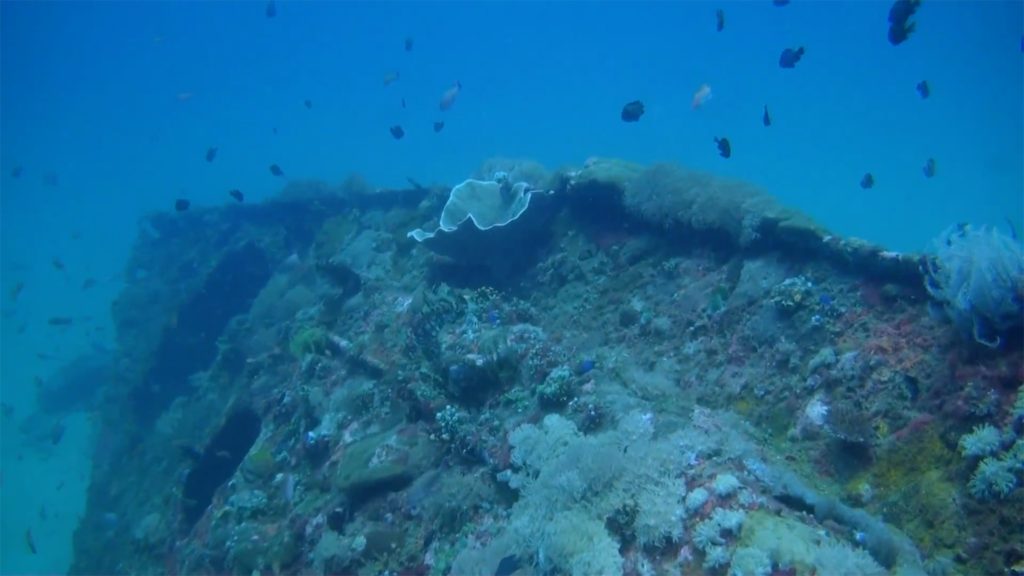
One of the most popular Puerto Galera dive sites for beginners, “Sabang Wrecks” are three deliberately scuttled boats that are adorned with colourful hard coral as well as various sponges, sea fans, anemones and sea squirts. You get to discover all three of these shipwrecks on one dive!
Hiding amongst the wrecks as well as along the seabed between them are a great many spectacular and quirky looking critters.
Look out for a wide colour palette of giant frogfish camouflaged against the hard coral (I’ve seen black, white, orange, green and grey ones here), meter long crocodile snake eels poking out from their sandy burrows, various types of scorpionfish, lurking moray eels and mighty, albeit rather grumpy looking stonefish.
There’s also numerous species of nudibranch as well as many cleaner shrimp and mantis shrimp.
At 17 meters, the first wreck is an open timber ship, with it’s steering wheel and part of the hull still in tact. Of the three wrecks, this is the best one for large, upwards jutting hard coral structures – which at this particular wreck, seem to be particularly favoured by giant frogfish of the black variety; usually found at the stern end of the wreck
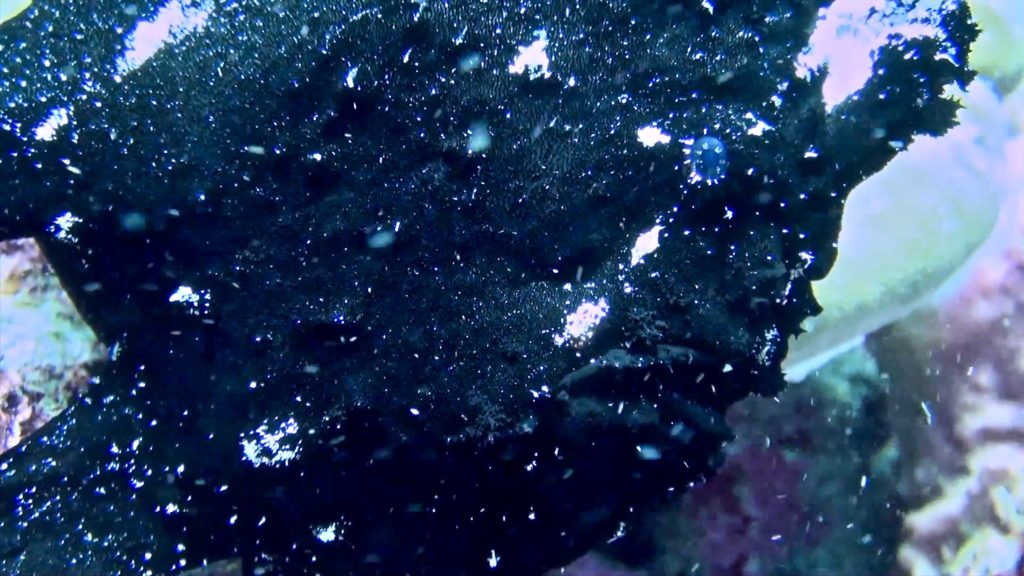
There’s also a great many reef fish here; including several species of colourful butterfly fish, some fairly large pufferfish, wrasse and gobies as well a handful of extremely friendly batfish which may well accompany you for the rest of your dive.
Head directly west of the first wreck – looking out for crocodile snake eels and mantis shrimp peering out from their burrows along the way – and you’ll come to the second wreck, which also lies at 17 meters.
Considerably less of this wreck remains; indeed it is comprised of little more than a few planks of wood and the two boat engines. Subsequently, there’s not as much coral reef here, although there’s still enough to support colourful nudibranch, blue starfish and various reef fish.
Generally, people spend the least amount of time at the second wreck before moving on to the third and most impressive one, which lies at 20 meters deep and is a very much still in tact steel hull yacht lying on it’s side.
The top side is covered in very colourful coral, sponges and other sessile marine life – this is another great place for spotting giant frogfish (I’ve seen orange and white ones here), nudibranch, lionfish and various reef fish.
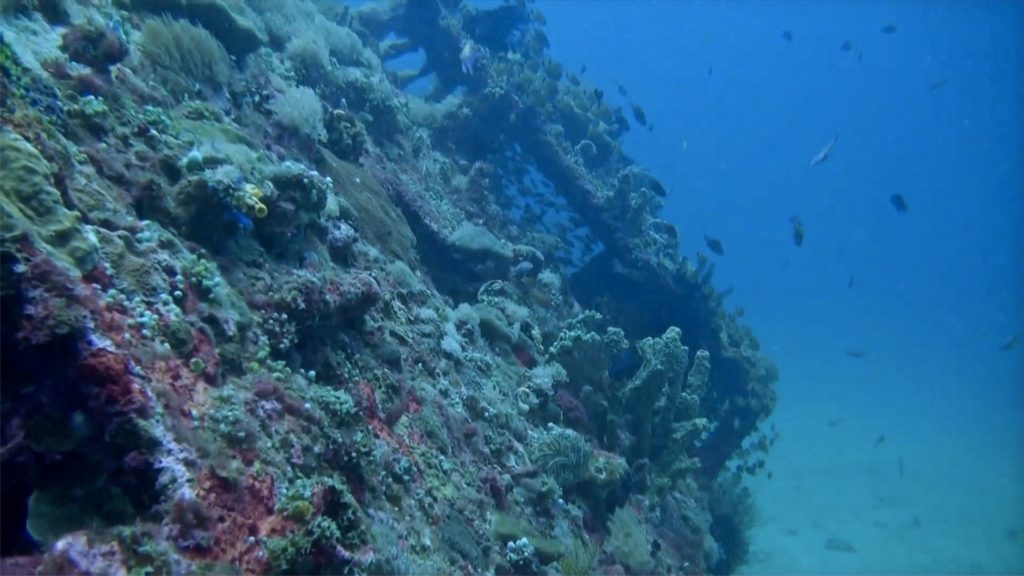
Peaking between the gaps at the bottom of this boat, you can see many cleaner shrimp and several moray eels, but the most exciting part of this wreck is the fact that you can easily swim through the large open crack of the stern and find yourself immersed in giant schools of fish. (Click here for an awesome read on how and why fish school!)
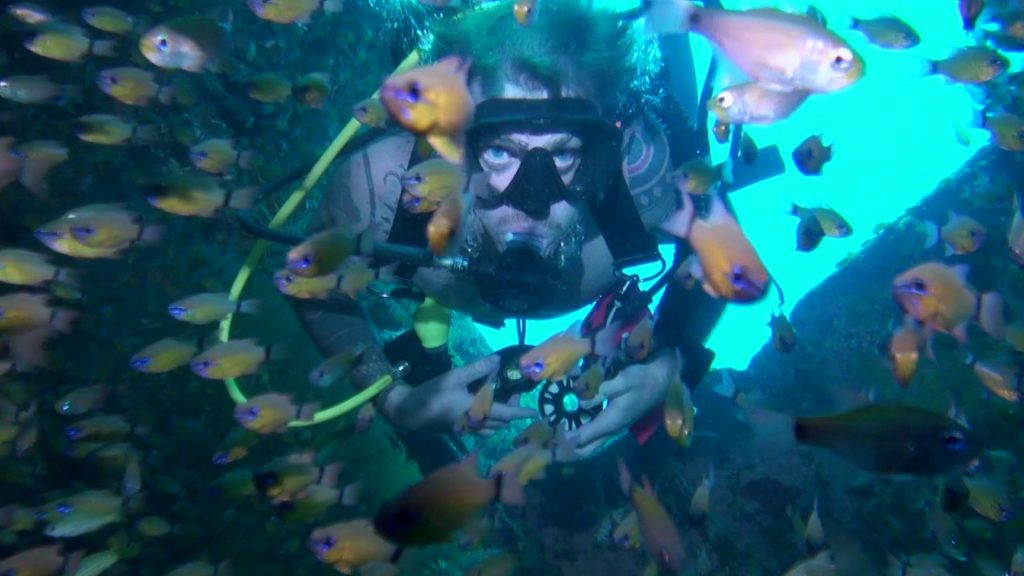
A really cool experience to be had whilst inside this wreck, is to approach the armies of cleaner shrimps clinging to the sides and offer them your hand. In a few seconds several will climb onto your fingers to feed on any dead skin.
If you want to take things up a level, remove your regulator and open your mouth just a few inches away from a particularly plucky looking shrimp.
Wait a few seconds and chances are it’ll swim off it’s perch and climb around your mouth to check if you’re in need of having any marine parasites removed!
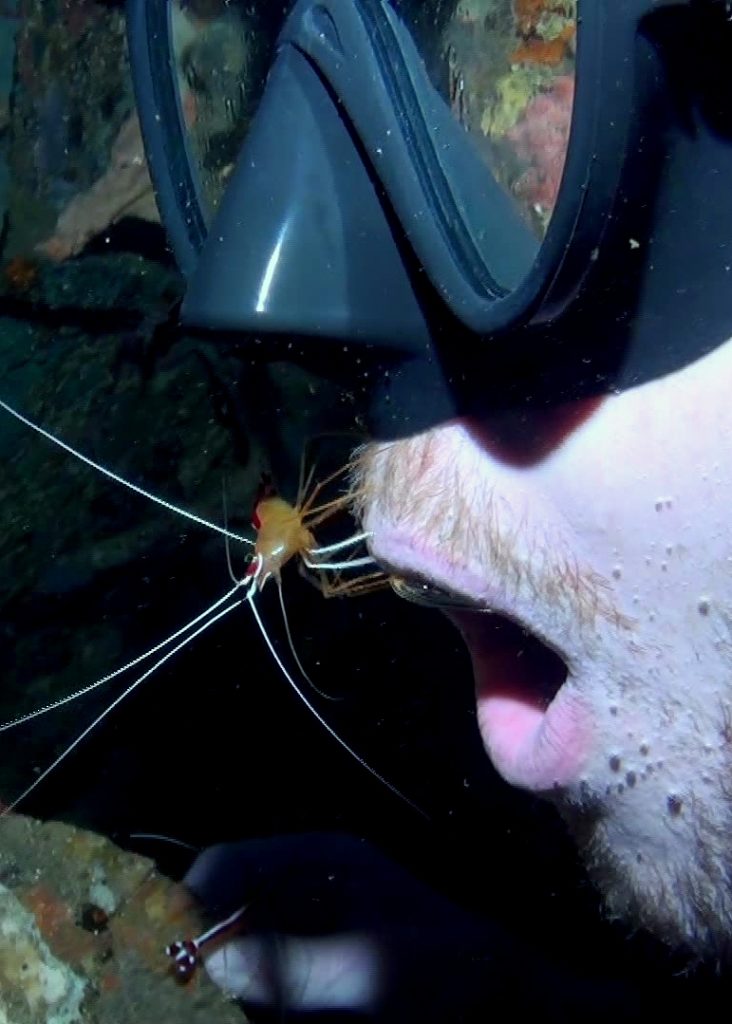
After bonding with the cleaner shrimp, continue swimming through the hull to the far end and exit the wreck via the moderately sized hole in the side of the bow end.
From this point onwards, you’ll be finished diving the wrecks. Do note that sometimes this dive is done in reverse order, starting at the 20m wreck and then moving inwards to the two 17m ones.
Either way: once you’ve finished diving the three wrecks, the adventure need not be over. Provided everyone in the group has enough air left, you can swim into shallower waters around Sabang bay – do keep an eye on the sandy bottom during the swim for the likes of demon scorpionfish, mantis shrimp and pipefish.
Your dive guide will either take you to “sabang reef” dive site which has a fantastic stretch of hard coral reef that is frequented by many varieties of reef fish and the odd titan triggerfish.
Or, staying in shallower waters you may head a little further westwards to the seagrass area which is a truly fantastic place for spotting green sea turtles – often several at a time!
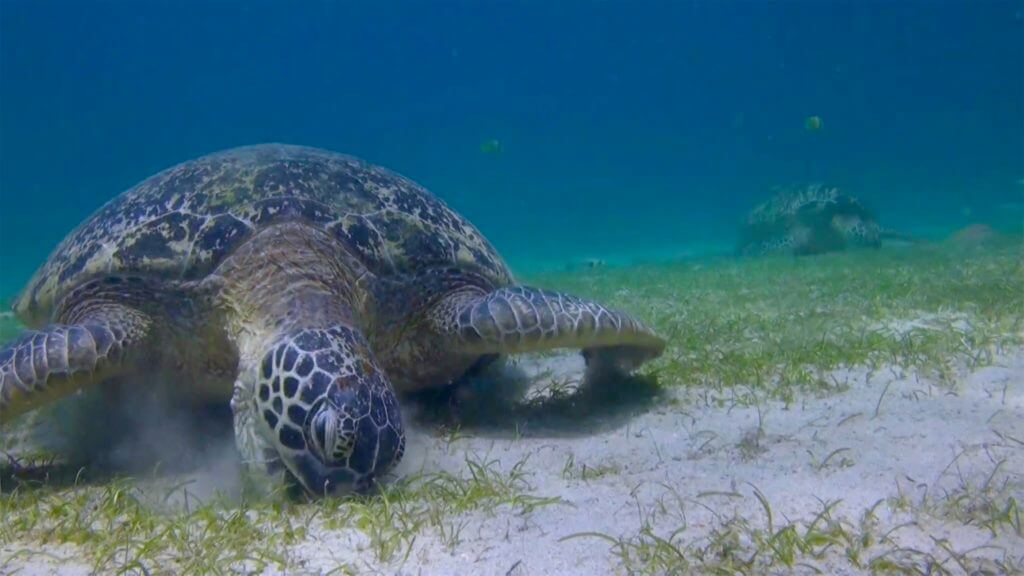
So not only does sabang wrecks let you explore three very nice, beginner friendly shipwrecks you also get to spend the last ten or so minutes of the dive in a whole new dive site around sabang bay.
Not bad at all, even by the high standards of Puerto Galera scuba diving. This is certainly one of the best sabang dive sites in terms of varied marine species, environments and experiences!
When I completed my Dive Master Course in Puerto Galera, I actually completed my first ever dive site mapping at Sabang Wrecks.
Despite it’s relative accuracy, this map has cruelly been the subject of much ridicule due to the fact that my handwriting and drawing skills have been compared to that of an elderly baboon at the height of a strong acid trip. Now, I share this work of art with you, so that you may marvel or scorn it at as you choose:
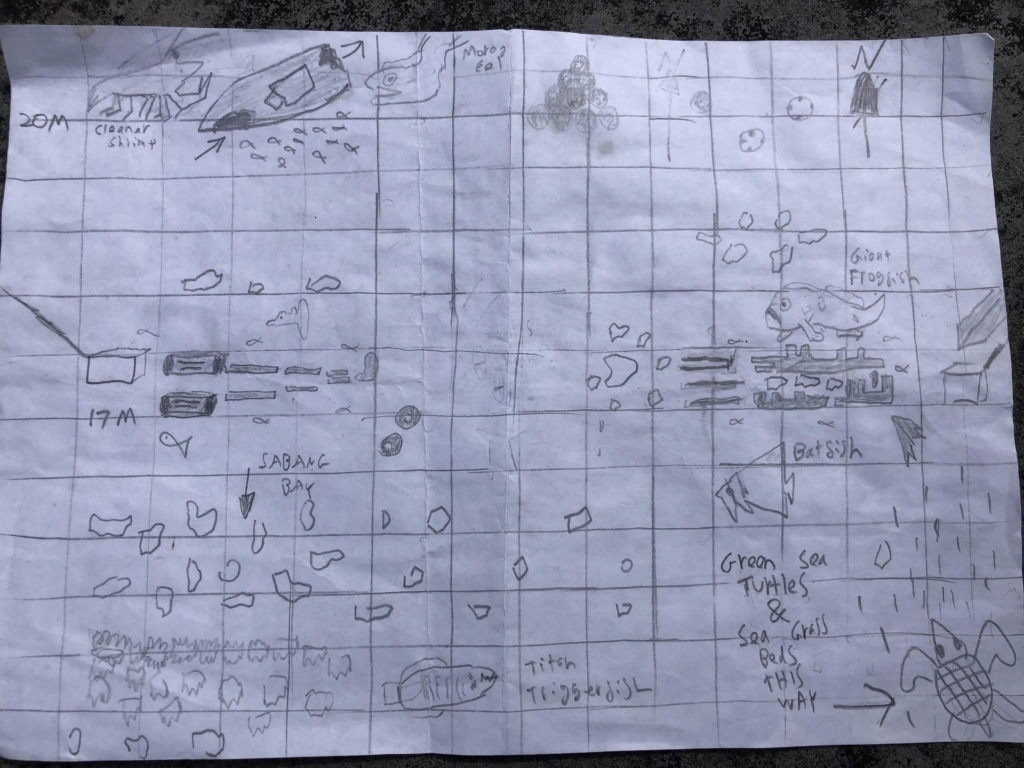
2) Canyons

Canyons is a deep-drift dive that beautifully showcases the beautiful coral reef for which Puerto Galera diving is best known. Due to the fact that this dive drops down to thirty meters and is prone to strong currents; it’s more suited to divers with a bit of experience and is a legit adventure in it’s own right.
You usually start this dive by dropping in at “Hole in the Wall” where you swim through a fairly narrow hole…in the wall, lined by pink and orange sponges and black sea lilies.
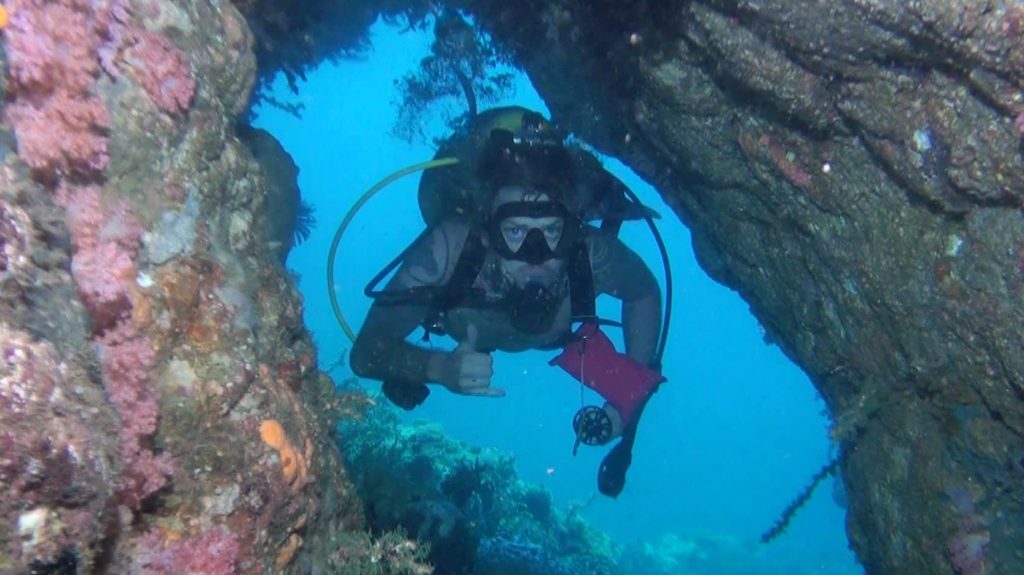
Upon emerging from the other side, you descend deeper into a dramatic underwater landscape comprised of three large canyons, that are totally covered in pink and purple coral and sponges.
The strong current that is usually (but not always) present here, can be sheltered from by taking cover in between these canyons, which are wide enough to swim through, encasing you in a towering world of scarlet and mauve, surrounded by many reef fish.
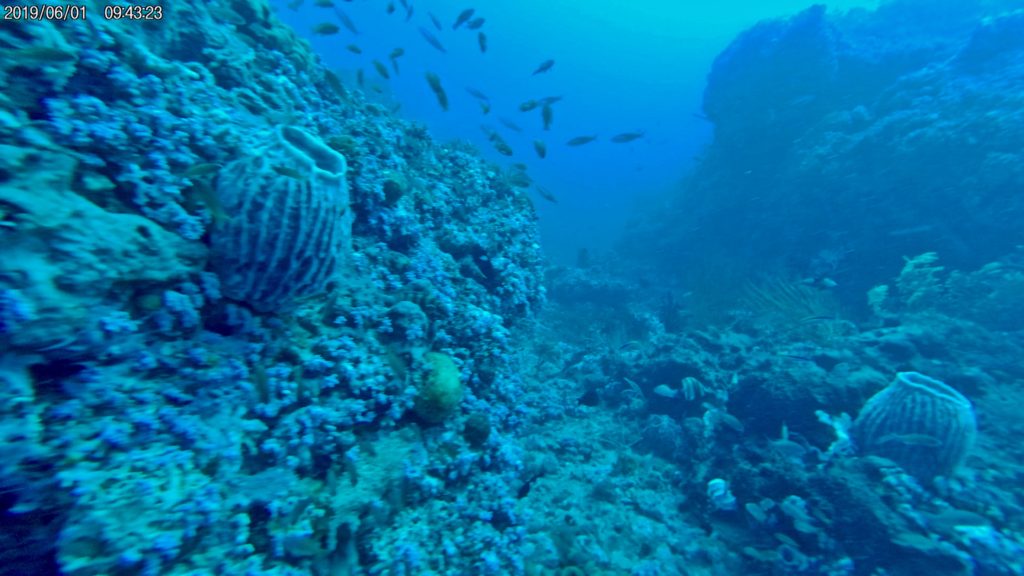
Circular openings between the canyons provide you a little more space to swim around and get nearer to the soft coral and sponge structures to observe what they look like up close. You’re also likely to see various nudibranch oozing over and feeding upon the various coral and sponges as well as the odd frogfish.
Canyons is also a great place for spotting large octopus, which can be found lurking amongst large stoney cracks and crevices and are prone to changing their colour as you swim closer. See if you can spot the one below:
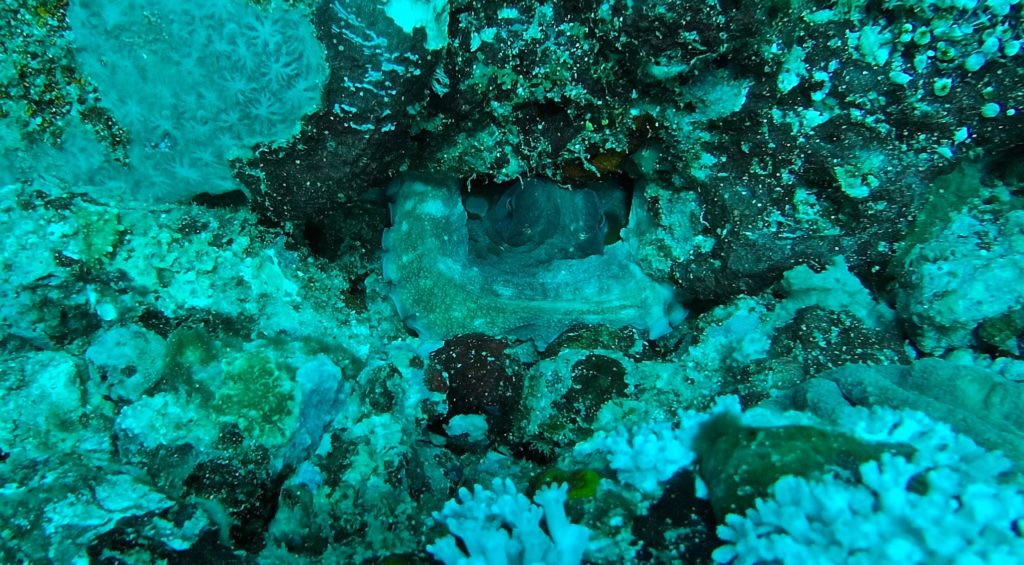
Although Canyons is home to a wide variety of the smaller reef fish encountered at most other dive sites in Puerto Galera, this area is fairly unique in that it is also used as a hiding spot by many larger fish – especially sweetlips and batfish as well as sometimes potato cod, giant grouper and titan triggerfish.
During strong current’s you’re likely to see scores of these larger fish – especially sweetlips and batfish, taking cover between the canyons.
However, if you end up diving the canyons when there isn’t any current, do make sure to look overhead as scores of these larger fish will usually be swimming more freely in the open water – particularly sweetlips!
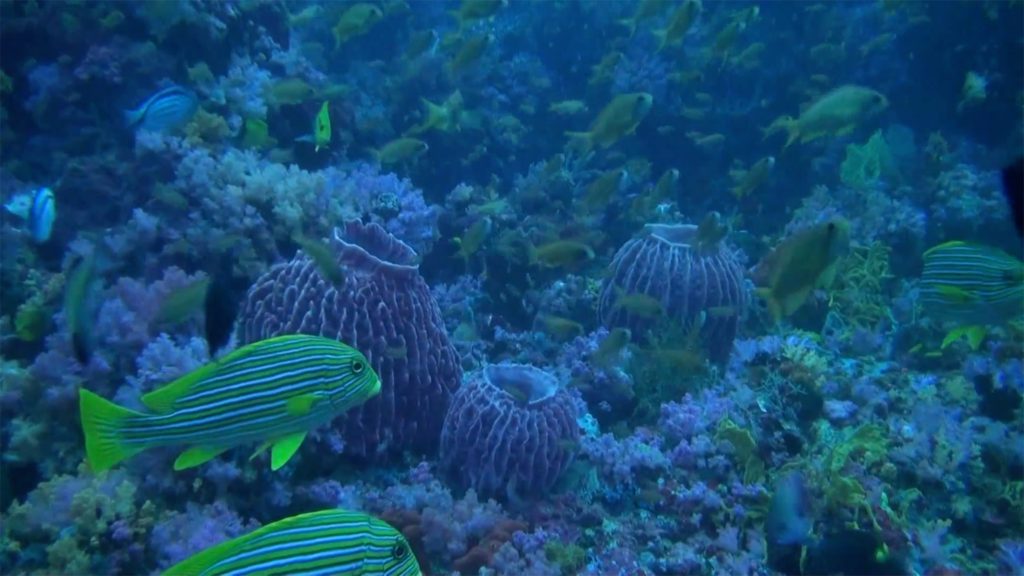
For me personally though, the main highlight of Canyons is the breathtakingly beautiful underwater landscape dominated by purple and pink soft coral and sponges. It’s unusual to see just one colour theme with reef, but the result is truly spectacular.
Riding the current between the canyons and ducking into each one is a real adrenaline boost and at times this dive feels like some kind of crazy ride!
After you’ve explored and passed over all three canyons, you’ll come to a vast anchor – this was dropped by a Spanish galleon almost five hundred years ago. It’s a really nice touch of history to mark the end of an amazing dive.
Actually, there’s one final interesting point to this dive. After coming to the galleon anchor and beginning to ascend, you’ll probably notice something. In the slightly deeper waters around this part of Puerto Galera, there’s many small, non-stinging jellyfish and other transparent organisms drifting about. They’re interesting to watch during your three minute safety stop!
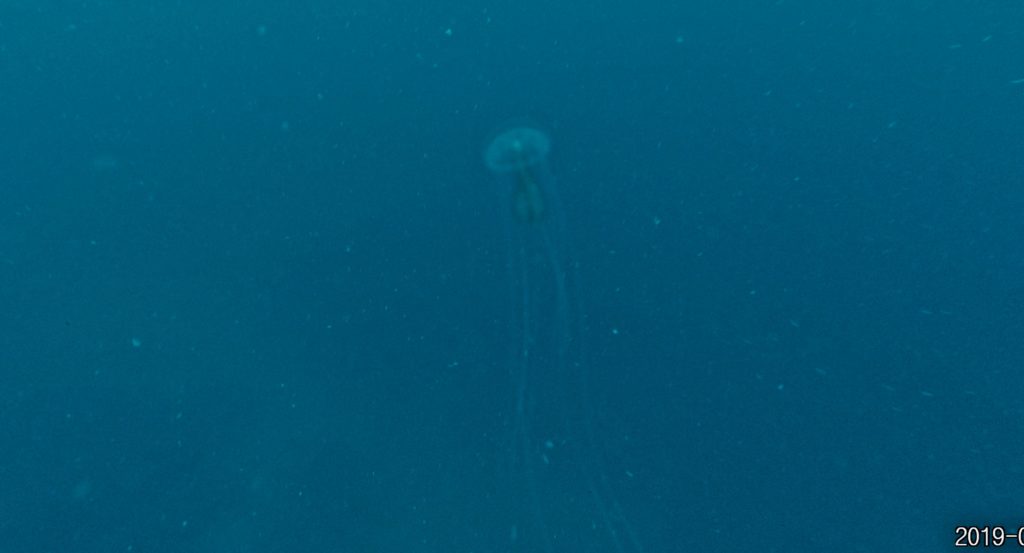
3) Giant Clams
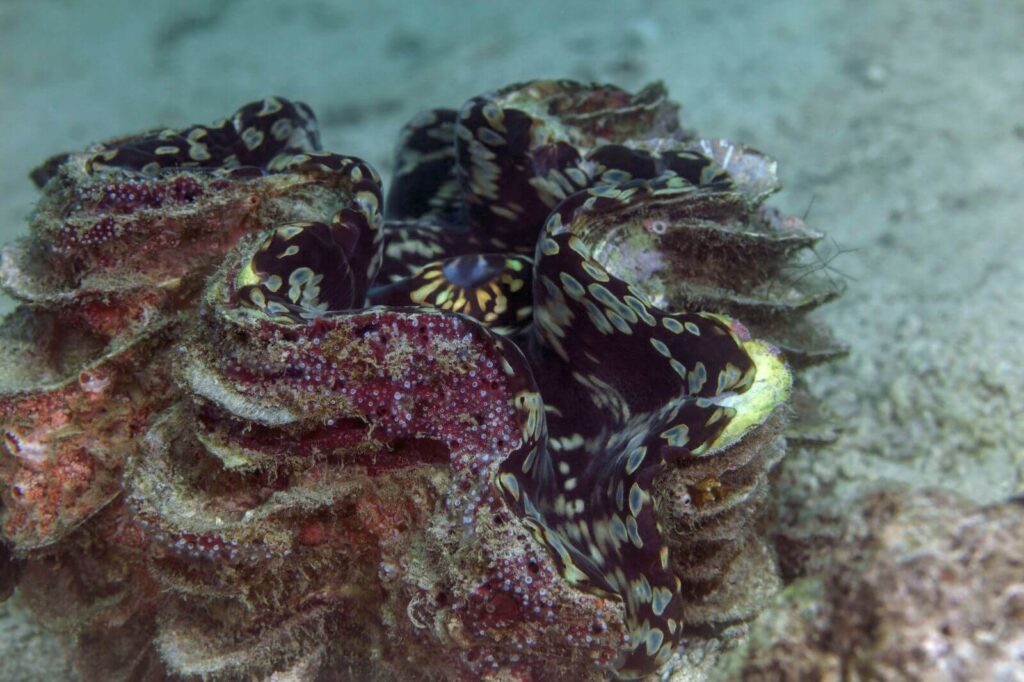
This is certainty one of the more quirky dive sites I’ve ever done. You get to witness some very large marine creatures – and some extremely tiny ones.
Located within the sheltered and beautifully scenic Puerto Galera bay, giant clams is a fantastic muck dive that is well suited for beginners due to a lack of any currents and a maximum depth of just 18 meters (with most of the giant clams being found at just 4 meters).
First of all, let’s talk about the Giant Clams – with a diameter of up to 1m, they are the world’s largest living bivalve mollusks and although stationary can often be seen opening and closing their shells, giving divers a glimpse at the enormous mantles within, which come in a variety of dazzling colours and patterns.
Around 30 Giant Clams – which are now an endangered species, have been artificially implanted in this lagoon and have special protection, with a 150,000 PHP fine for anyone who touches them.
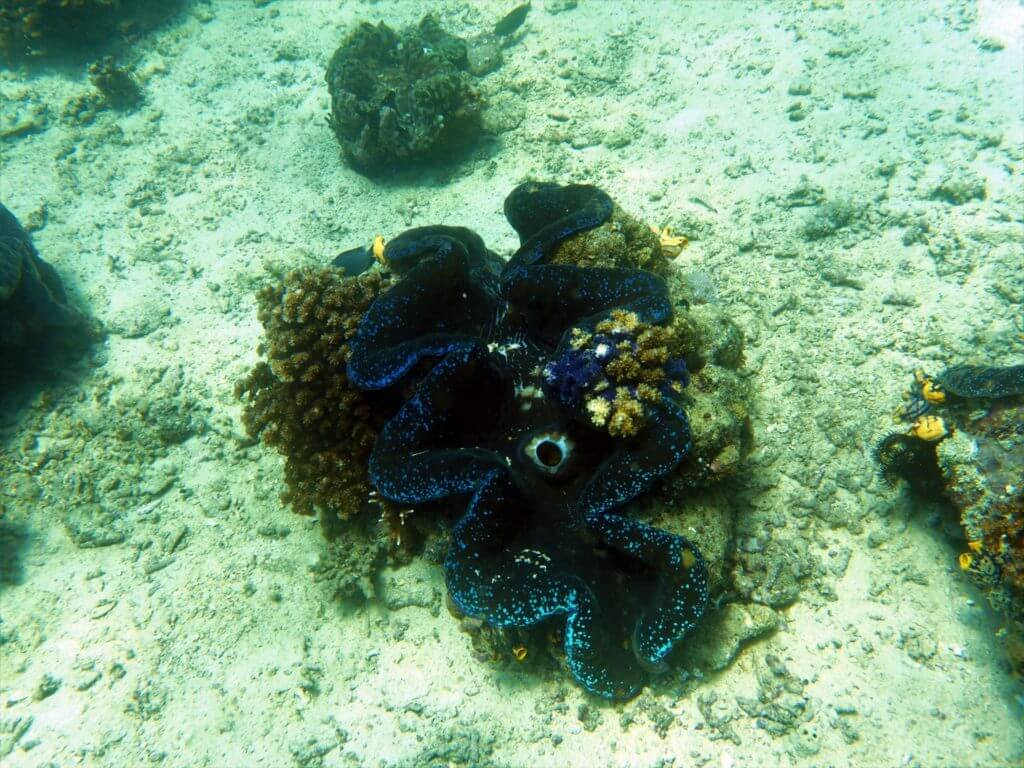
It’s really up to you how long you decide to spend staring at the Giant Clams – it’s entirely possible to make an entire dive of just that, however if you do decide to descend deeper there are a great many quirky macro critters awaiting discovery.
Here the underwater landscape is quite empty with only a few small clusters of coral and somewhat reduced visibility – yet this barer environment attracts and makes it easier to spot some very small and often quite obscure macro critters, the sort of which you rarely see at other dive sites.
There are many different varieties of nudibranch, such as the minuscule Costasiella Kuroshimae (also known as “Saun the Sheep”) nudibranch – which are just a few millimetres long and are found in clusters on dead leaves, feeding not on the dead leaves themselves but the algae growing on them.
Interestingly, “Saun the Sheep” nudibranch perform kleptoplasty, which is the process of retaining the chloroplasts of the algae they consume, so that they can be used to perform photosynthesis – and this contributes to these nudibranches’ overall colour!
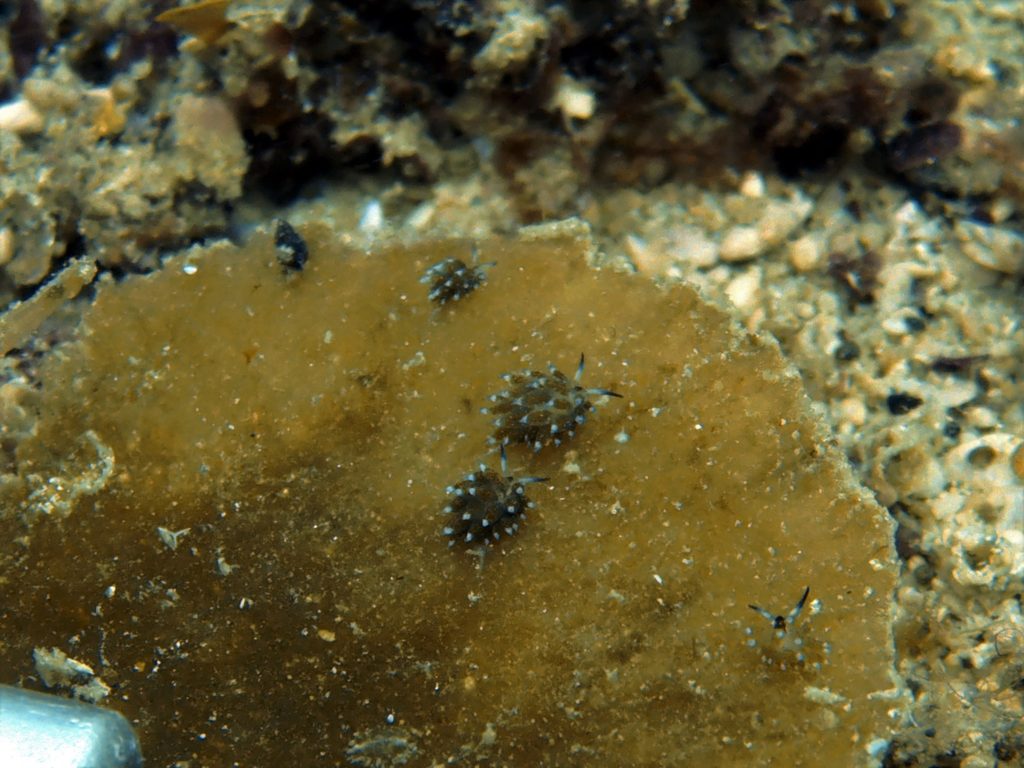
In addition to numerous mantis shrimp – which although extremely cool, are quite common at many Puerto Galera dive sites, there are also quite a lot of rarer crustaceans at Giant Clams – if you know where to look.
I’ll give you a handy tip for finding small marine animals: It’s all about knowing where they like to hang out. For example, you now know to get close to dead leaves to look for tiny Saun the Sheep nudibranch.
So how can you find some of the tiny crustaceans at Giant Clams? Keep your eyes peeled for the greenish coloured whip coral that occasionally appears at this dive site and swim up to it as close to it as you can, whilst taking care not to touch it.
Peer closely and you stand a good chance of seeing the tiny and almost transparent whip coral shrimp that make their homes here – but take a good look, because they’re not much bigger than a grain of rice!
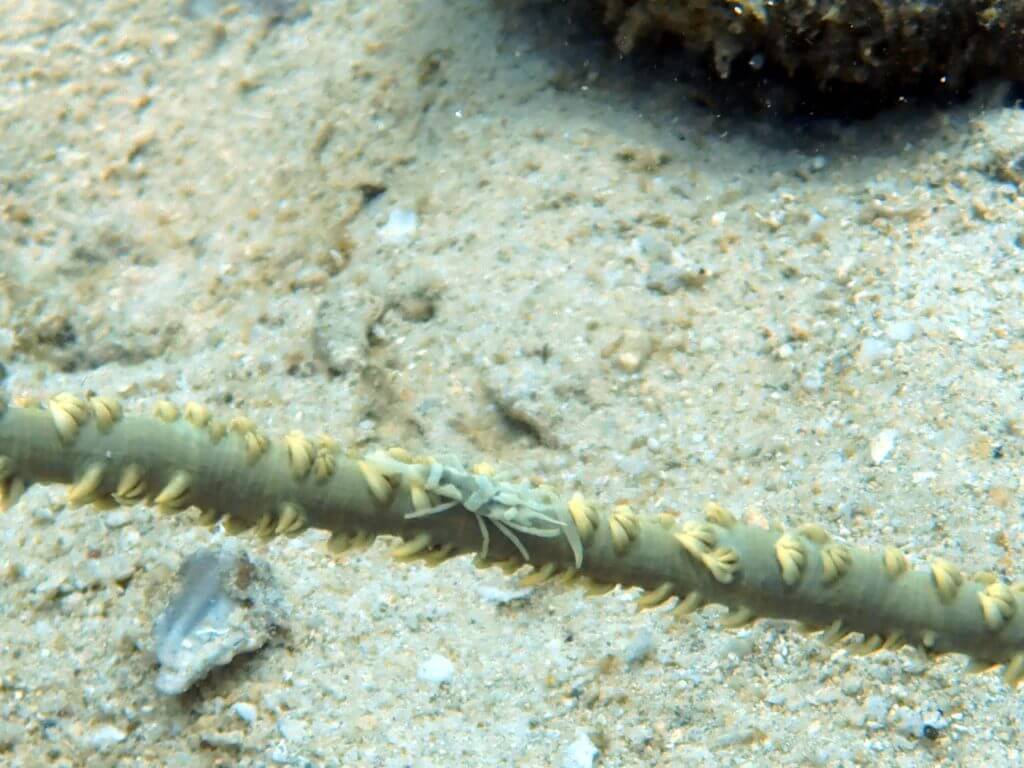
Giant Clams is also a fantastic place to spot cephalopods – the very first time I dived here, I saw a blue ringed octopus as well as a flamboyant cuttlefish (pictured below).
Blue ringed octopus and flamboyant cuttlefish both tend to be perfectly camouflaged against their surroundings when not moving and are also very small – as are so many of the other hidden gems at this dive site which also include various pipefish, seahorses and many other types of nudibranch and crustaceans.
So long as you don’t mind a somewhat barren underwater landscape and have a good pair of eyes on you – or at least your dive guide does, you have a great chance of discovering numerous small and rarely seen macro critters on this rewarding muck dive, all with several dozen Giant Clams thrown in for good measure.
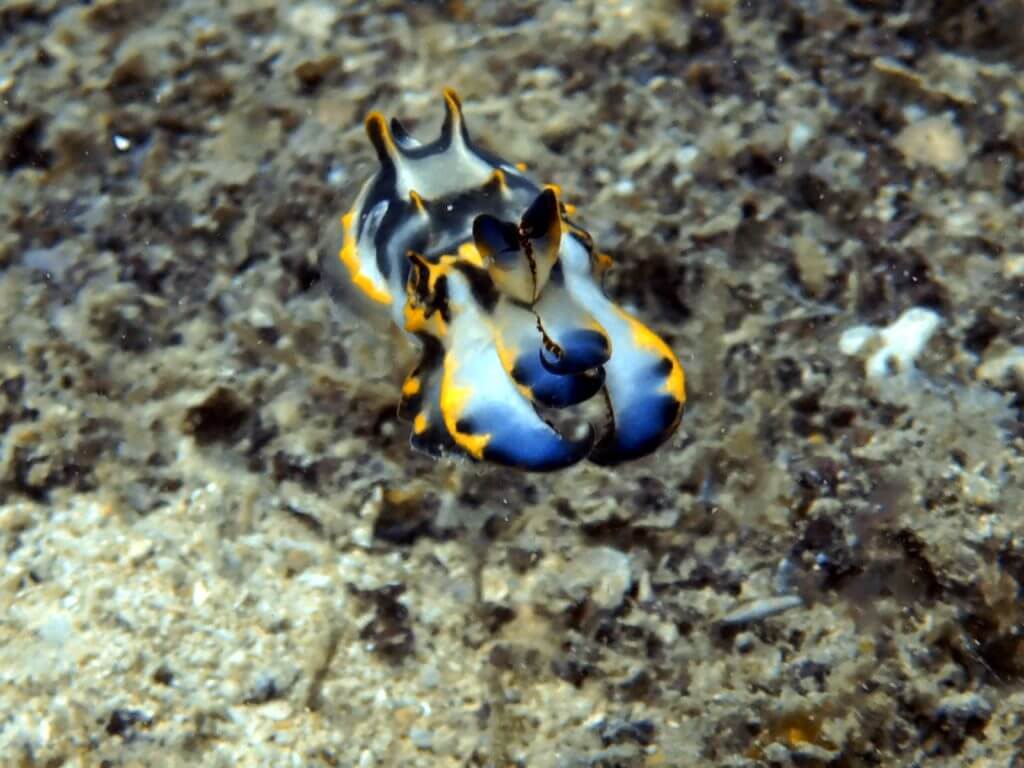
4) Monkey Beach
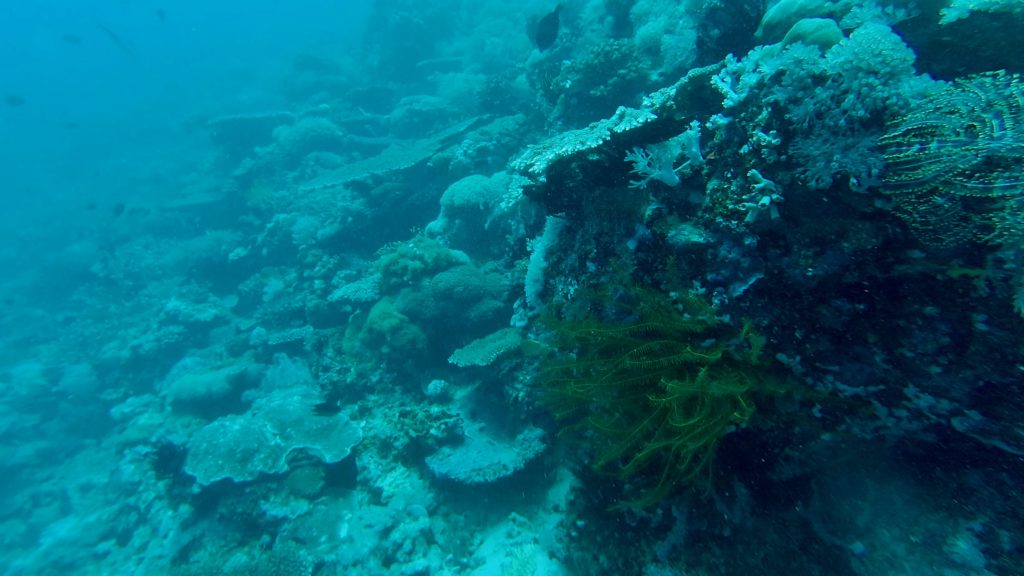
Ah man, I really do love Monkey Beach – this is Puerto Galara diving at it’s finest as it shows off some of the insane coral reef geology and massive shoals of reef fish, for which this destination is a true gem!
Located around the corner from Sabang Bay, Monkey Beach is comprised of a sloping reef descending to 18 meters and formed from an extremely colourful mishmash of hard and soft coral species along with various sponges, sea fans, sea squirts and other sessile marine life.
Depending on what time of day you go, there’s a roughly 50/50 chance of this dive site having either no current or a fairly moderate one.
The later scenario is the best way to experience Monkey Beach as you get carried along on an epic tour of the entire mighty sloping reef which starts at Monkey Beach and then melds into the dive sites “Dugon Wall” and “West Escarcio”
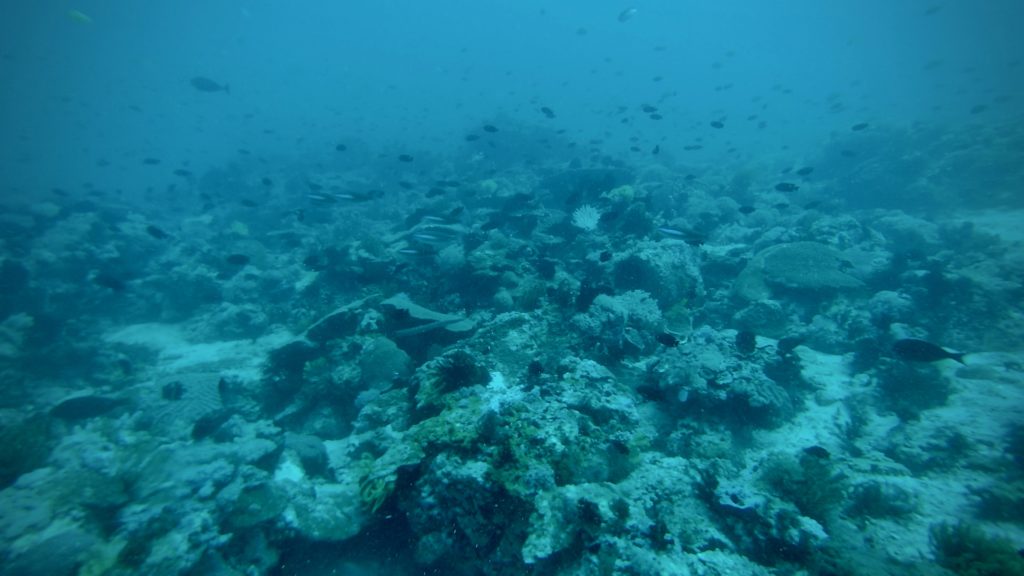
There are a great many extremely colourful reef fish around this reef; which in addition to the usual suspects also include triggerfish, damselfish, chinese trumpetfish, lionfish, moorish idols and pufferfish to name a few.
This is also an excellent place to spot various species of sponge and coral eating nudibranch, banded sea snakes, sea snake eels (which are eels that have evolved to mimic the appearance of banded sea snakes, making them a little hard to tell apart!), mantis shrimp, juvenile batfish and lots of moray eels.
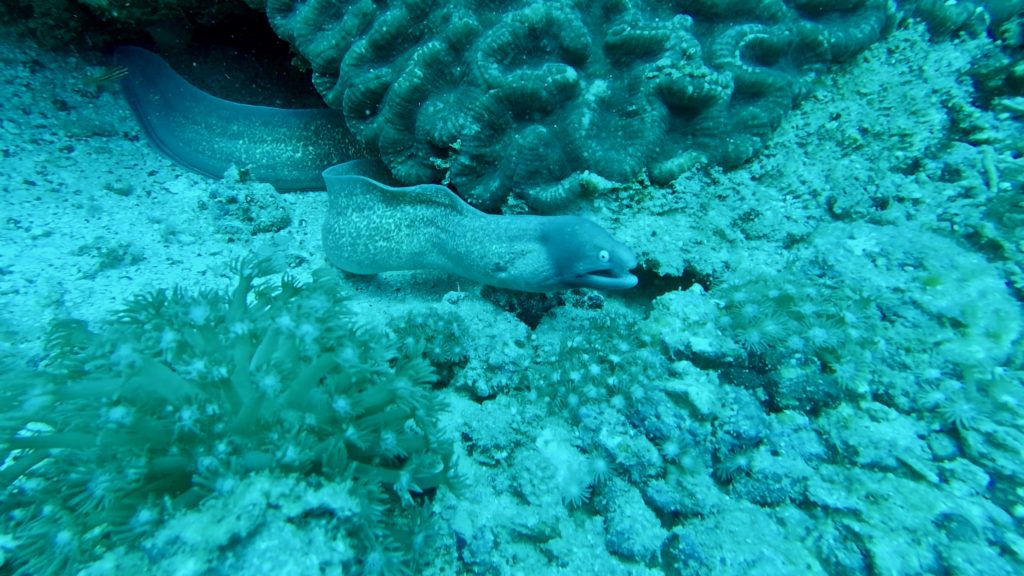
If you do dive at Monkey Beach when there’s no current, you will get a slightly different experience as by staying at this one dive site, you’ll be able to explore a sandy bottom area where there’s a 6 meter long scuttled yacht that’s lying on it’s side and is heavily coated in sponges and feather stars.
You can often find juvenile yellow boxfish cruising around the top side of this tiny wreck – usually when they spot you they beat a hasty retreat for the cover of the wrecks underside!
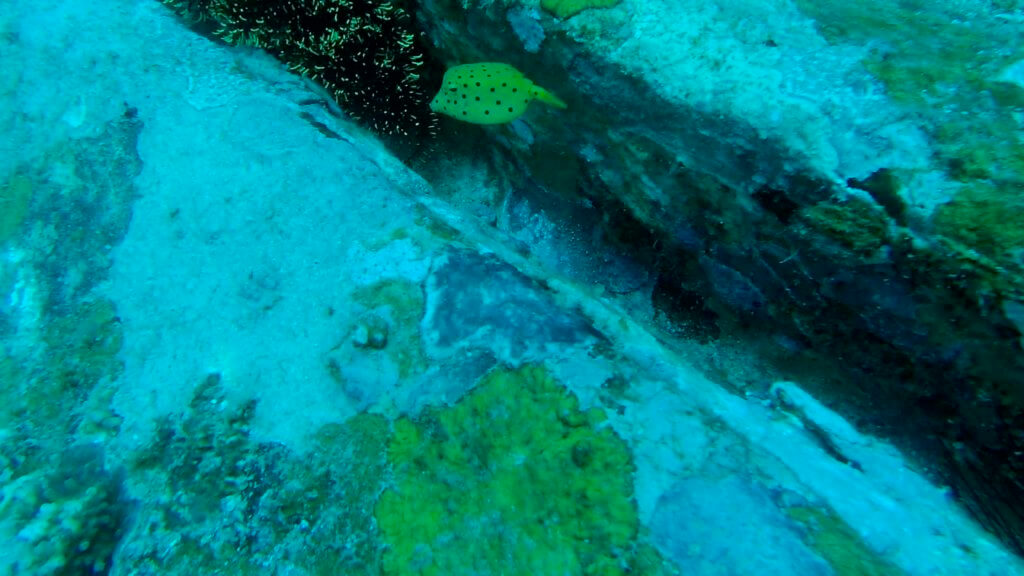
For me though, the best way to experience Monkey Beach is when there is a current and you simply make yourself comfortable and enjoy the ride as you get toured around some of the very best hard coral reefs in all of Puerto Galera, amidst vast clouds of reef fish.
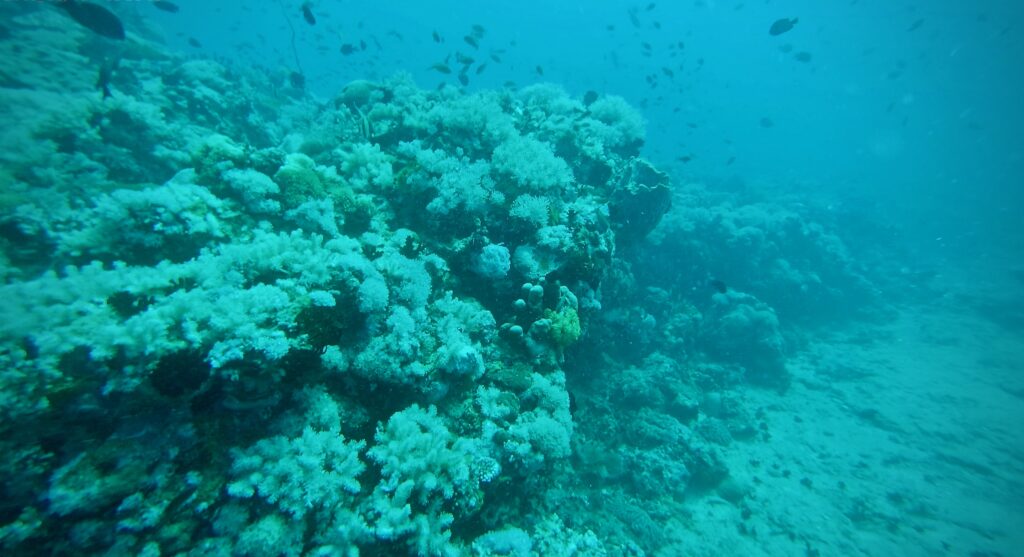
5) Alma Jane
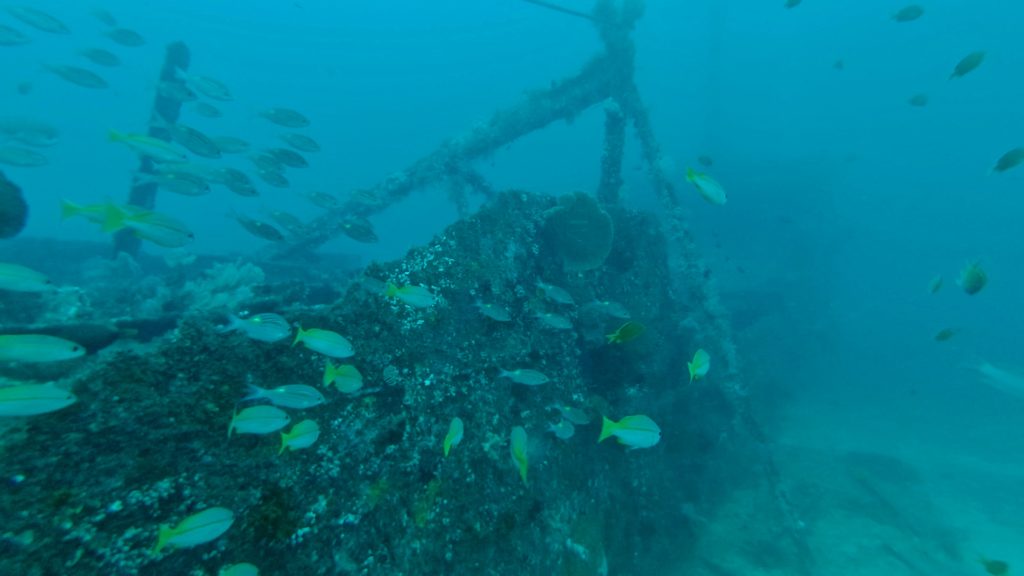
The biggest and most impressive shipwreck in all of Puerto Galera is the Alma Jane; a 30 meter long cargo ship, that once ferried goods around the Philippines but was deliberately scuttled in 2003 and now lies upright at 30 meters deep within Sabang bay.
The hull and stern of the Alma Jane are still very much intact but other parts of this wreck are collapsing meaning you can no longer swim all the way through it, however it’s still possible to drop down into the two cargo holds and even stick your head through the cabin doorways.
Generally speaking however, it is the outside of the Alma Jane that’s the most impressive. This is the best angle from which to observe the entire shipwreck – which is coated in various corals, sponge and feather stars as well as being the best place to posse for cool photos.
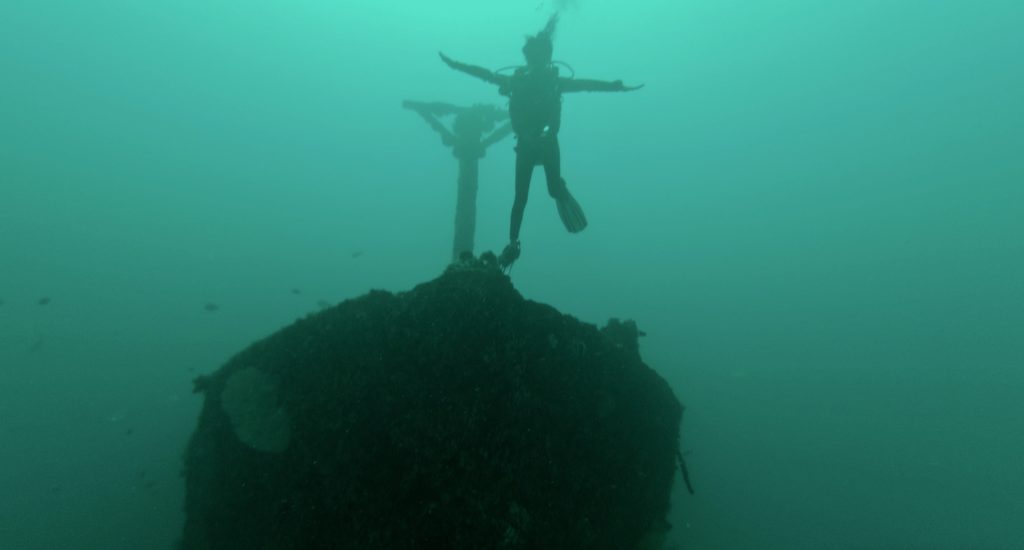
For me though, the coolest thing about the Alma Jane is not so much the wreck itself as it is the animals you’ll be sharing this dive with.
There is a huge schools of adult Batfish cruising around this wreck. Most of the school hangs motionless in the water like the scene from a dream, whilst individual members occasionally break away and fan out around the edges.
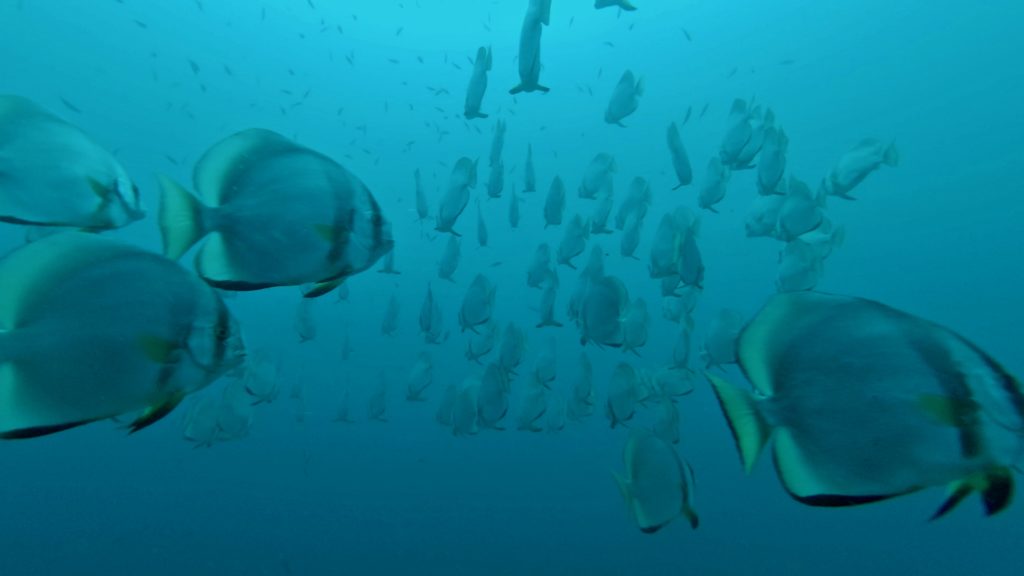
It’s quite fun to take an egg down on this dive with you and break it to attract the attention of some of these hungry but very gentle Batfish.
Smash the egg up to share it amongst several individuals or break it cleanly so that the yolk floats through the water – for several seconds, before it gets inhaled by the nearest batfish.
There’s also many large schools of smaller reef fish lazily circling the wreck. Mostly they’re concentrated around the stern and above the hull of the Alma Jane – don’t worry, it’ll be impossible to miss them.
Hiding amongst the wreck itself are various types of frogfish, including giant, warty and painted frogfish. You can also sometimes glimpse furry orangutang crabs hiding amidst the bubble coral.
Covering the sandy bed around the Alma Jane are armies of large purple sea urchins and if you swim up close you can actually make out the tiny tubular feet on their undersides marching along at a snails pace (just keep your distance from the spines!).
And, if you’re very lucky, a green sea turtle just might stop by to steal the show.
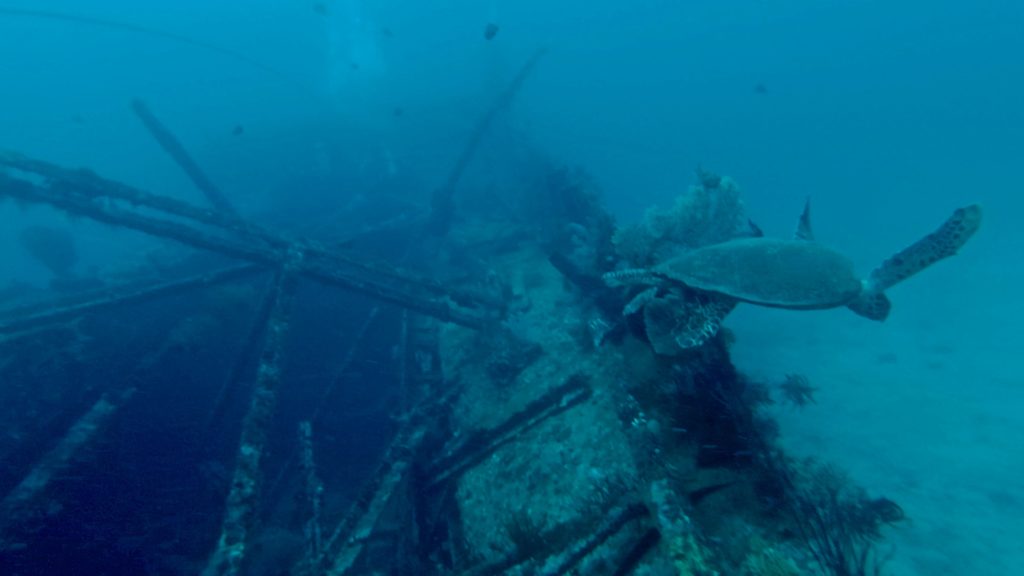
Dive Season of Puerto Galera
Awesome news – it’s possible to dive at Puerto Galera all year round! That said there is a distinct rainy season in Puerto Galera as well as times of year that see more tourists than others. You can divide the diving annum of Puerto Galera into four parts:
- Spring (March – May): Humidity and temperatures combine for a very warm feel with highs at around 33.6 degrees celcius. There’s little rain around this time! Spring is the busiest time for tourism, meaning there’s usually more events and such going on in the evenings.
- Summer (June – August): Temperatures are very warm around this time which is also when rainy season starts. That said, although it’s called rainy season, there’s usually only two or three hours of heavy rain a day. Water visibility and diving quality remains high. Look out for epic dry lightening displays in the evening!
- Fall (September – November) Rainy season is in it’s full throws now with slightly lower temperatures but precipitation at least every other day. Tourism is at it’s lowest, meaning prices can be reduced. You can still get some very good diving at this time.
- Winter (December – February): This is the best time of year in Puerto Galera for cooler temperatures. There’s a few rainy days, but not many. This is the second busiest time of year for tourists!
How to Get There
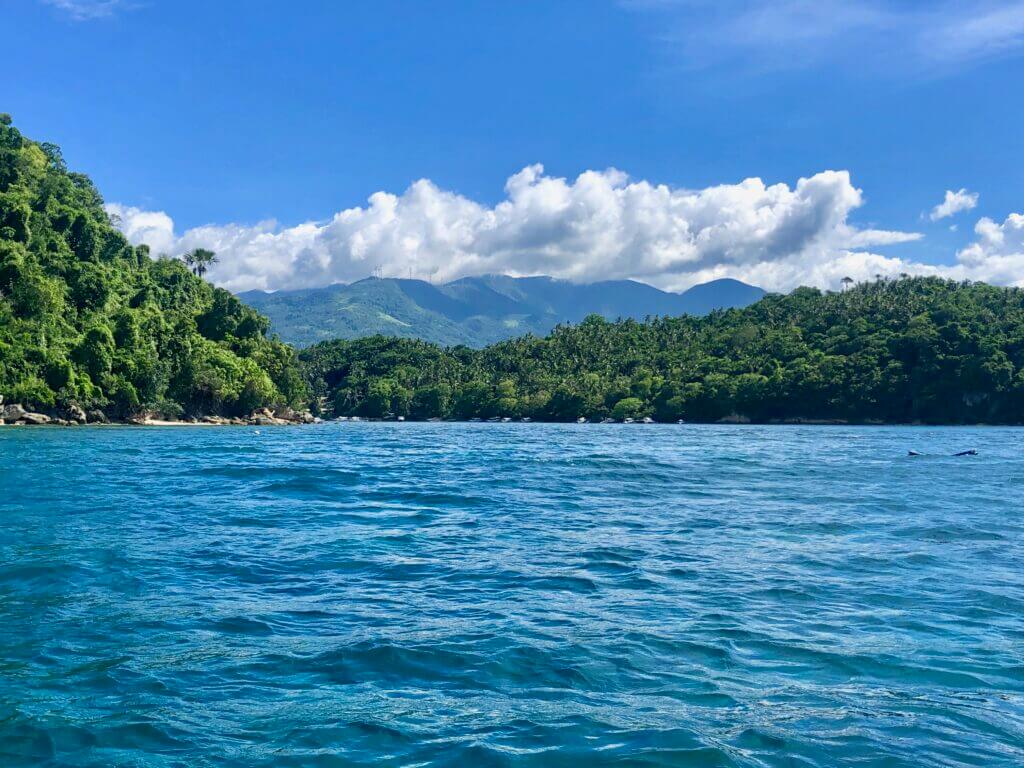
Despite the fact that Puerto Galera is so off the beaten track, getting there is both easy and cheap. If you’re coming into the Philippines, chances are that you’ll fly into Manila Ninoy Aqui Airport.
From Manila it’s just a 2.5 hour journey by bus journey down to Batangas Port, costing around 200 pesos ($2).
From Batangas port, catch the ferry to Puerto Galera ferry terminal – it will take 1 or 2 hours, depending on whether you get the fast boat or the slow boat and generally cost around 250 ($2.5) pesos for the ferry fee, 50 pesos (50 US cents) for the environmental user fee and 30 pesos (30 US cents) for the terminal fee. The last ferry leaves at 5pm!
Once you arrive in Puerto Galera port, you need only walk for a whopping 30 seconds before you meet the tricycle drivers who will be more than happy to take you to the Sabang peninsular.
Scandi Divers Resort: Full Review
Before I went to Puerto Galera I scoured the internet, travel forums and scuba diving pages for information on all of the various diving resorts there in order to find out which was the absolute best in terms of location, amenities, service and price.
After several weeks of research, which also included personally emailing each resort to gauge their responses to specific questions, I chose Scandi Divers Resort.
This turned out to be a truly great decision; one which was reinforced even more after going there and yet again once I visited several of the other resorts undercover to make a sneaky comparison. Here’s why:

Location:
Scandi Divers Resort is located on Big Lalaguna Beach, which is by far the nicest and quietest beach on the Sabang peninsular, with the least amount of infrastructure and the very best views.
Just twenty yards of golden sand lies between Scandi Resort and the ocean, with epic views all the way across to the distant mountainous shores of mainland Luzon.
The waters off Big Lalaguna Beach are the cleanest in Puerto Galera, thanks to the fact that Scandi Divers have their own sewage treatment plant in the resort (they’re the only resort to have this), to minimise their carbon footprint.
Because Big Lalaguna beach is enclosed from the rest of the sabang peninsular by two rocky outcrops of jungle covered cliff on either side, it feels very secluded and private.
Finally, even though Scandi Divers is the most serene and secluded beach it still lies just a 15 minute walk from the Sabang bars and shops, with a tricycle stand just around the corner.
Resort:
Unlike most other resorts, much of Scandi Divers accommodation is directly facing the ocean and is a superb place to catch the sunset from, which comes in best from Big Lalaguna Beach.
There’s a wide range of lodging options. No other resort has premium suites with kitchens and ocean facing private balconies.
Scandi Divers also has some of the hands down cheapest accommodation options in Puerto Galera, with it’s cosy, ocean facing beach huts.
Perhaps the best view of all, comes from the legendary Scandi Sky Bar, which is renowned for holding some of the best events nights in all of Puerto Galera; there’s also another two bar/restaurants at second floor and ground level, meaning you don’t have to go anywhere to have a great night
The gourmet food, created by the talented head chef Ivan, is extremely tasty and there’s a wide variety of options of both western and asian cuisine. Guests get 10% off on all food and drinks.
Scandi Divers Resort also has a swimming pool, a small jungle gym and the only decompression chamber in Puerto Galera.
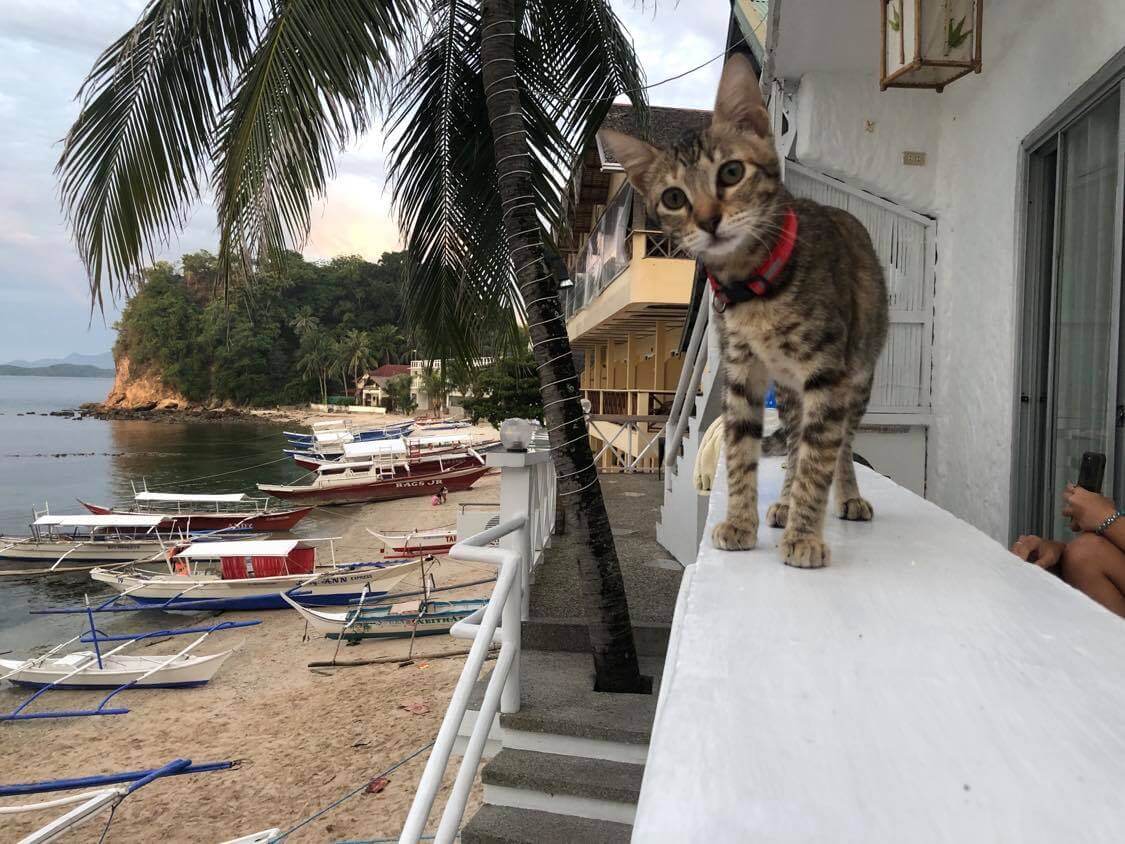
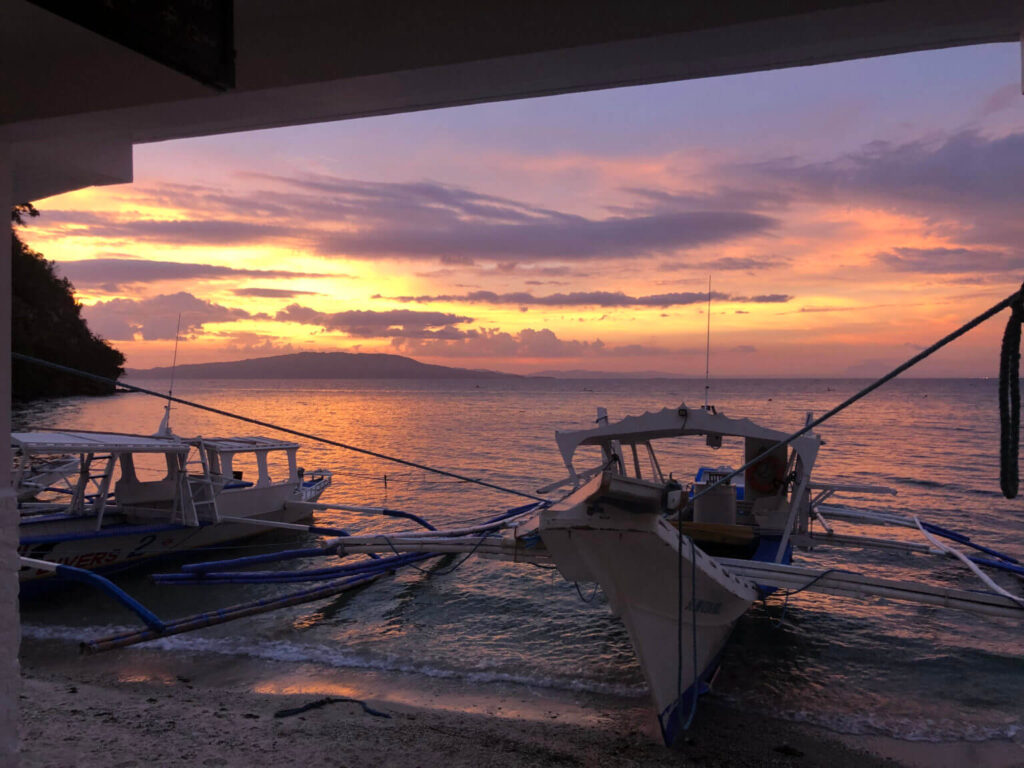
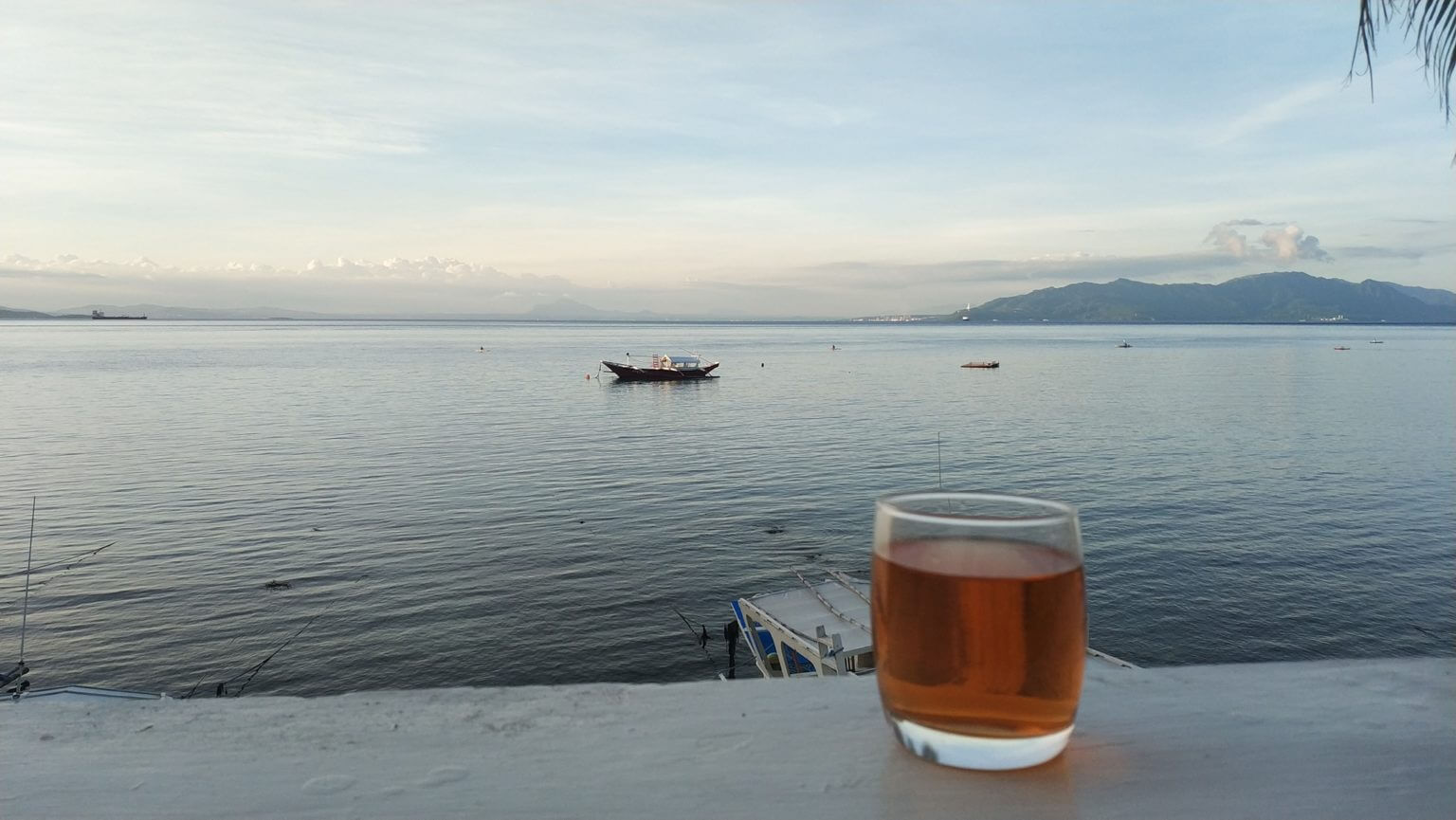
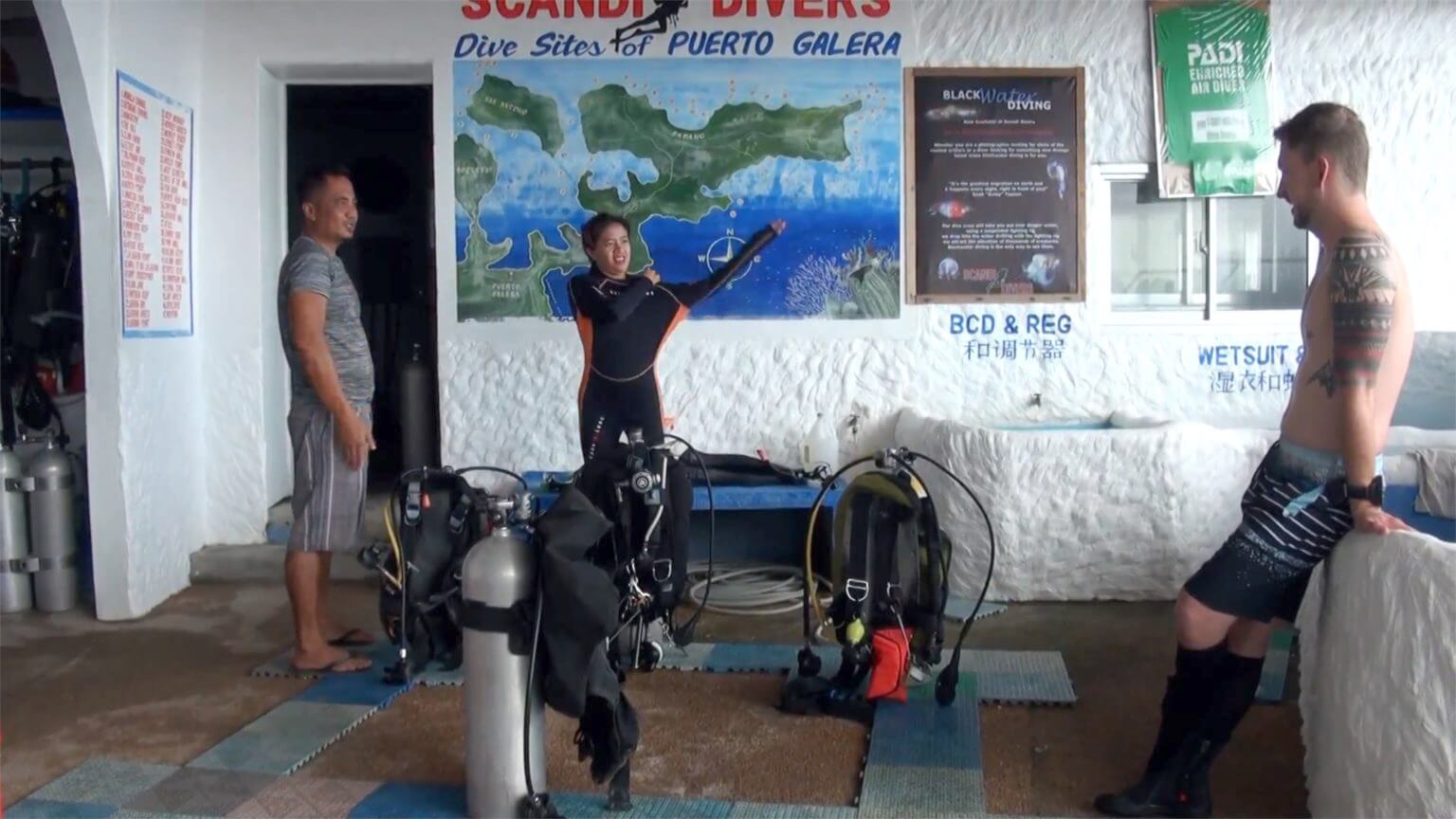
Diving:
As a Puerto Galera dive centre, Scandi Resort are superb – their rentable dive gear is top quality and if you stay for more than one night, you’ll get your own personal box of rented gear set aside for you, so nobody else uses it – nice!
With two dedicated diving skiffs and extremely outgoing and friendly team of dive staff, the team are more than happy to take people to specially requested dive sites, provided the weather allows (which it usually does).
I was blown away by the dive guides skill and knowledge when it came to finding cool creatures to point out – it went above and beyond my expectations.
Furthermore, you can arrange special scuba diving excursions with Scandi such as day trips to the nearby Verde Island – and perhaps even cooler, Black Water Diving!
Black Water Diving is where the boat takes guests out to deep water, at night and use a suspended lighting rig to attract the attention of countless weird and wonderful critters that migrate up from the deep every night!
With fun dives priced at 1,500 pesos ($30) at most times of the year, with discount options available when you bulk book dives, Scandi also offer the cheapest diving prices in Puerto Galera.

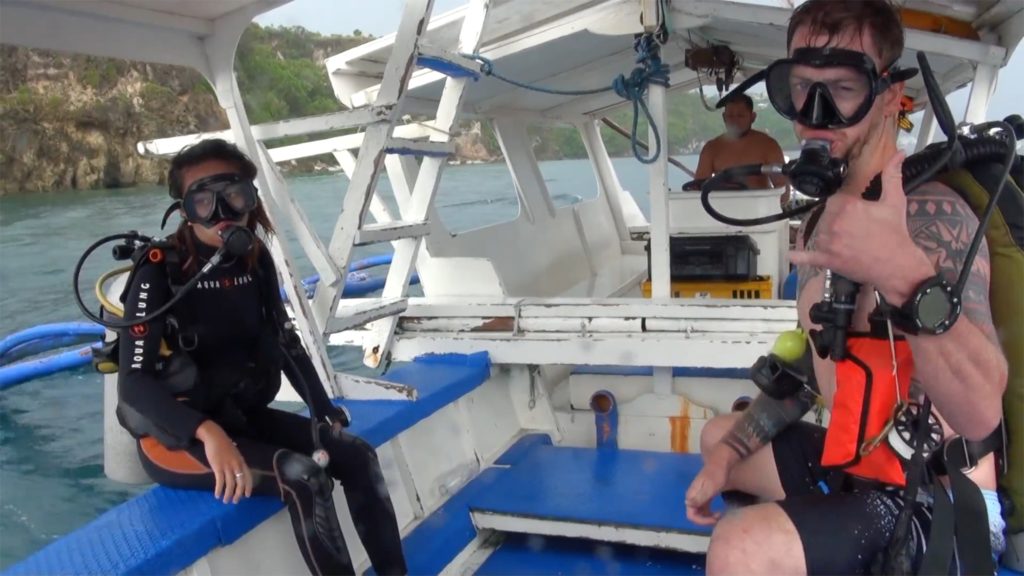
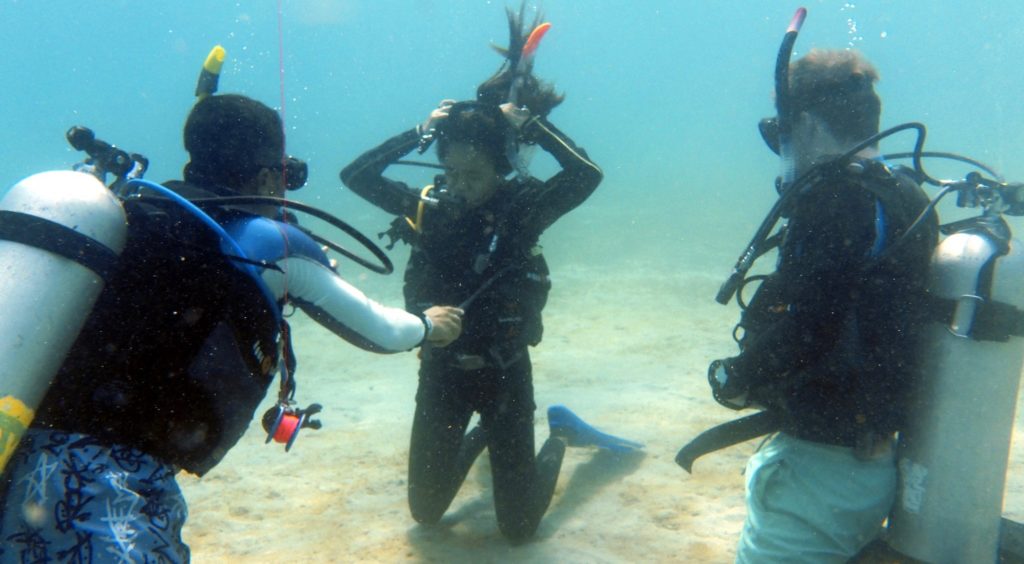
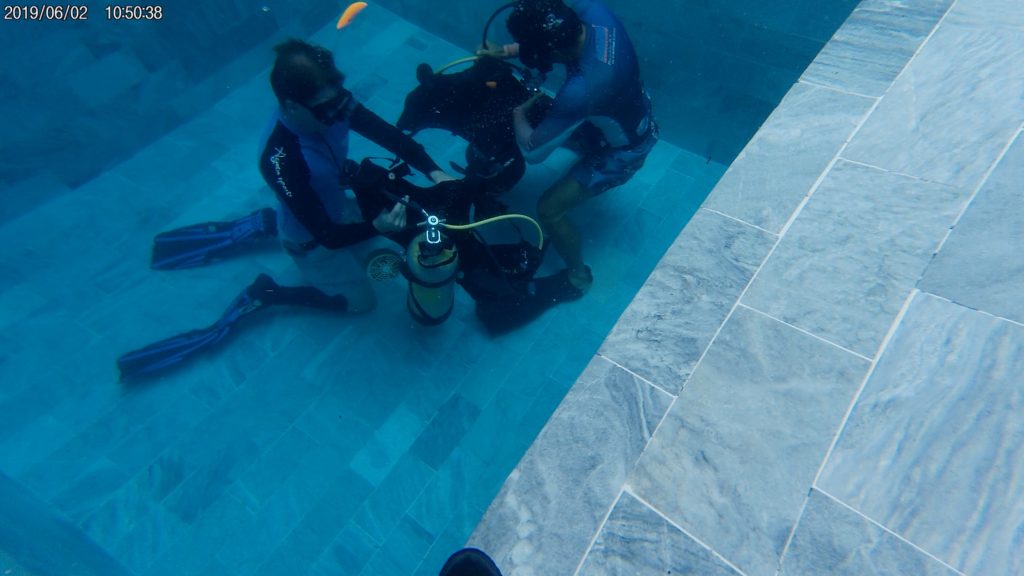
Staff + Overall Vibe
I’m definitely not the only one to say this: Scandi Divers staff are like one big family that you will quickly become a part of.
Much of this is due to the fact that virtually all of the staff have known eachother since childhood. Everyone is always smiling and joking around, yet the service is as fast and reliable as can be.
During my six month stay at Scandi Resort during 2020’s Covid-19 Pandemic, there were so many unique and hilarious personalities floating around that even when diving was banned for months, it was still a legit pleasure to be spending time with these awesome people. The Scandi Staff seemed to always have a bounce in their stride and nothing could get them down.
I visited several other Puerto Galera resorts, and whilst some were pretty nice, others were downright unfriendly and miserable – it was a shocking change compared to Scandi! I will be back to Puerto Galea again and it’ll be Scandi Divers I stay with once more.
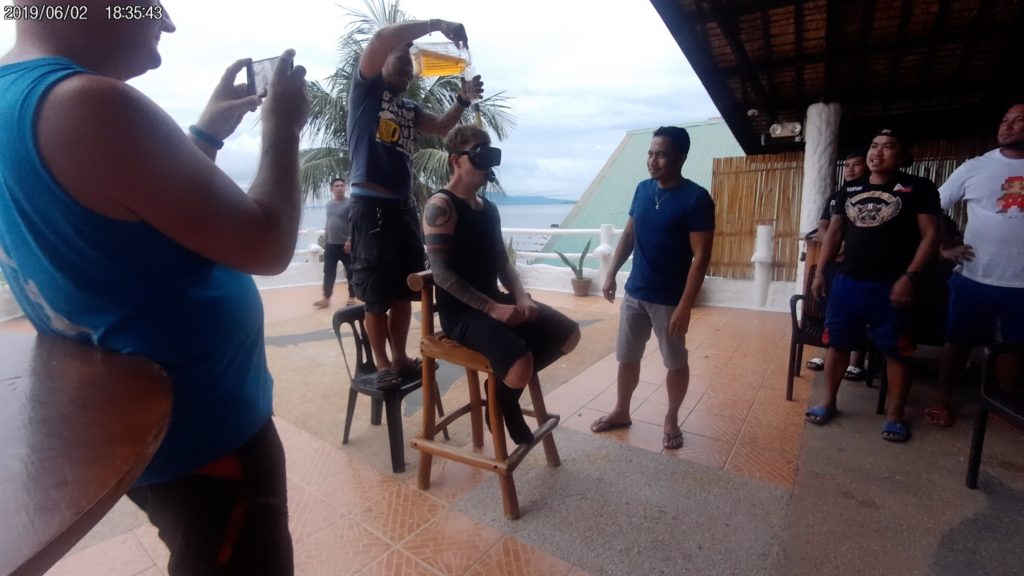
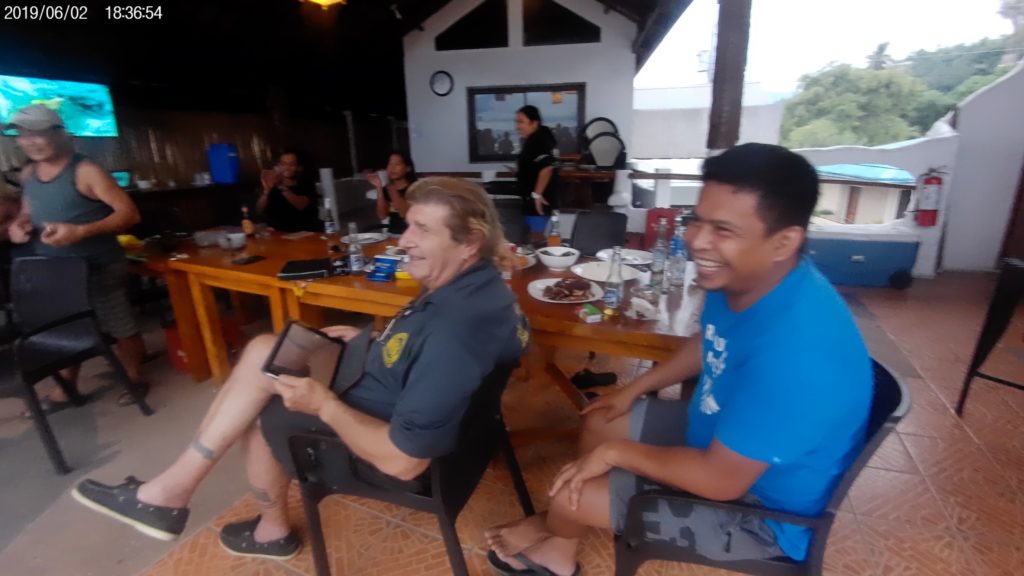
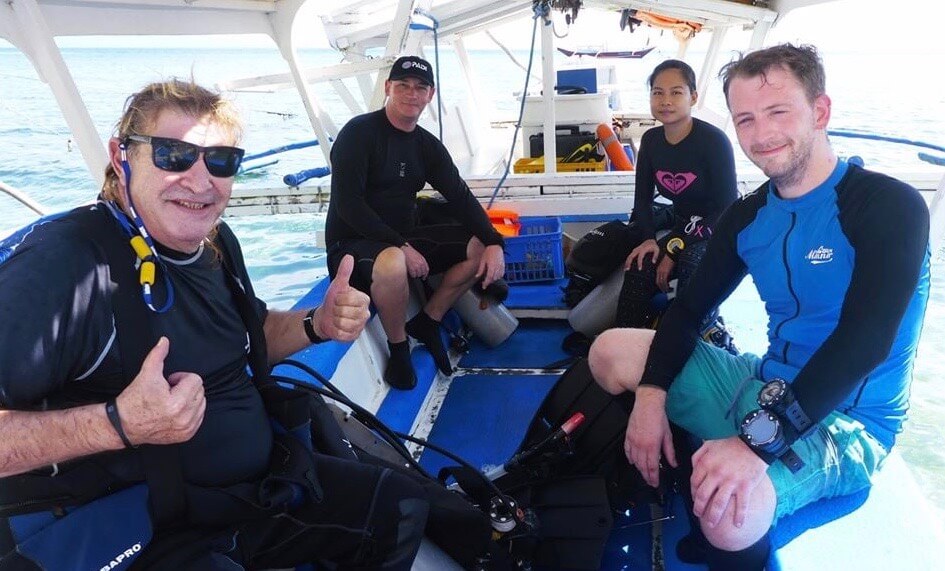
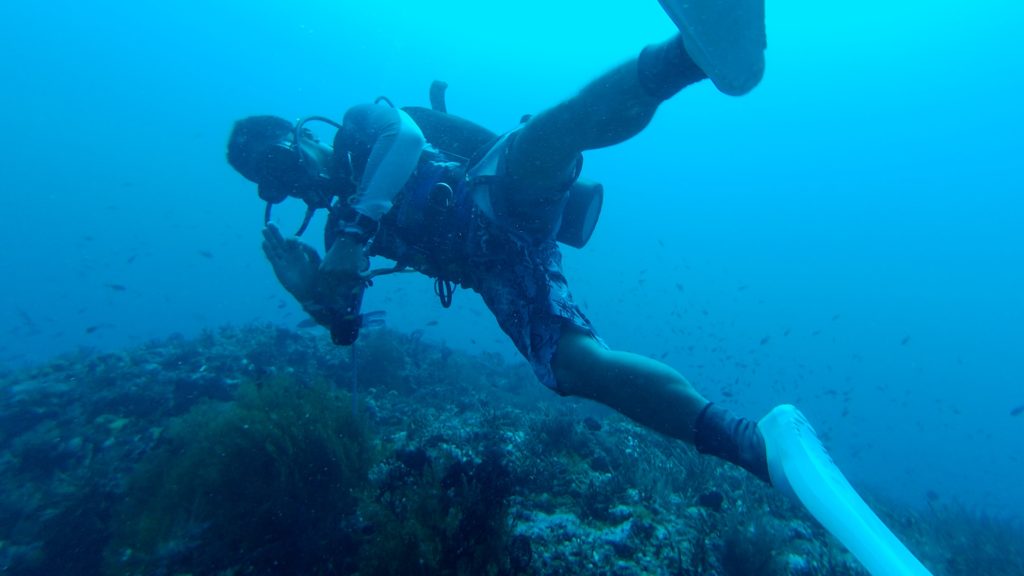
My Experience at PG
I rocked up to Puerto Galera half way through March in 2020 – just 5 days before the Philippines followed the rest of the world into lockdown, following the rise of Covid-19. Having planned to only spend a few weeks in PG before travelling and diving around other parts of the Philippines I became stuck here for half a year!
During the first half of this time we were not allowed to scuba dive there at all, but still I remained as I was determined to attain my PADI Divemaster Certification.
There were trials and tribulations along the way, unlikely characters, strange turns of events and much more. You can read the entire saga in this separate article I wrote here.
Other Things To Do in Puerto Galera
1) Ponderosa Viewpoint
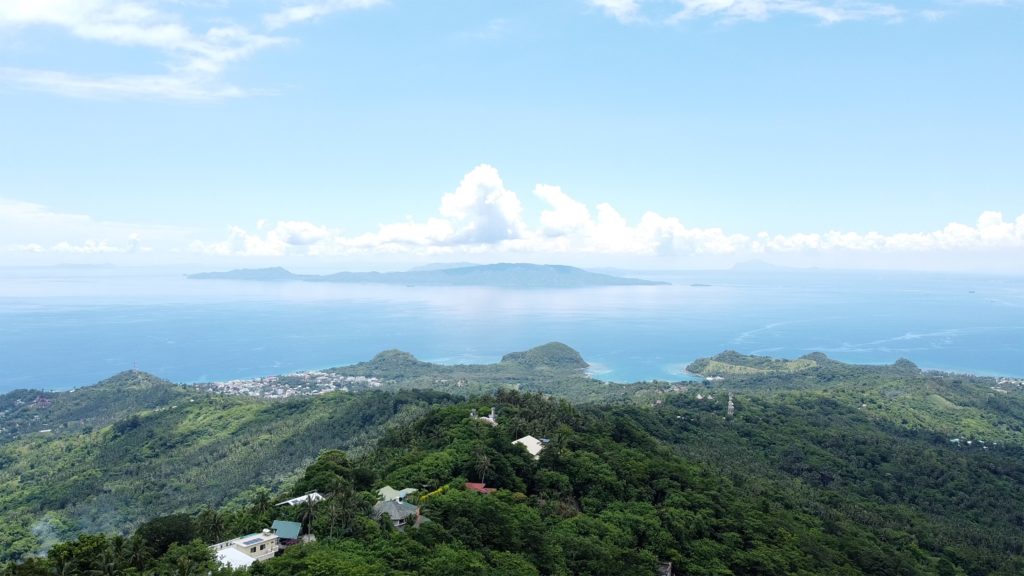
Ponderosa Viewpoint is just a 30 minute scooter ride away from the Sabang Penisualr and sits on a tiny, jungle covered mountain, one of the very few on Mindoro to be accessible via a road (albeit a steep one!).
At the top is a small facility that you can pay 20 pesos to go inside. This is definitely worth it as you can climb to the top of the tower to get the absolute best panoramic views of both the tiny Sabang Peninsular and ocean stretching away from it towards Luzon in the north, and the increasingly high jungled coated mountains headed back south into the centre of Mindoro.
For about 500 pesos per person, you can also pay to go on a truly epic zipwire that’ll carry you above hundreds of feet of jungle canopy below.
A little way below, is also the location of Ponderosa Golf Course, if golf is your jam.
2) White Beach
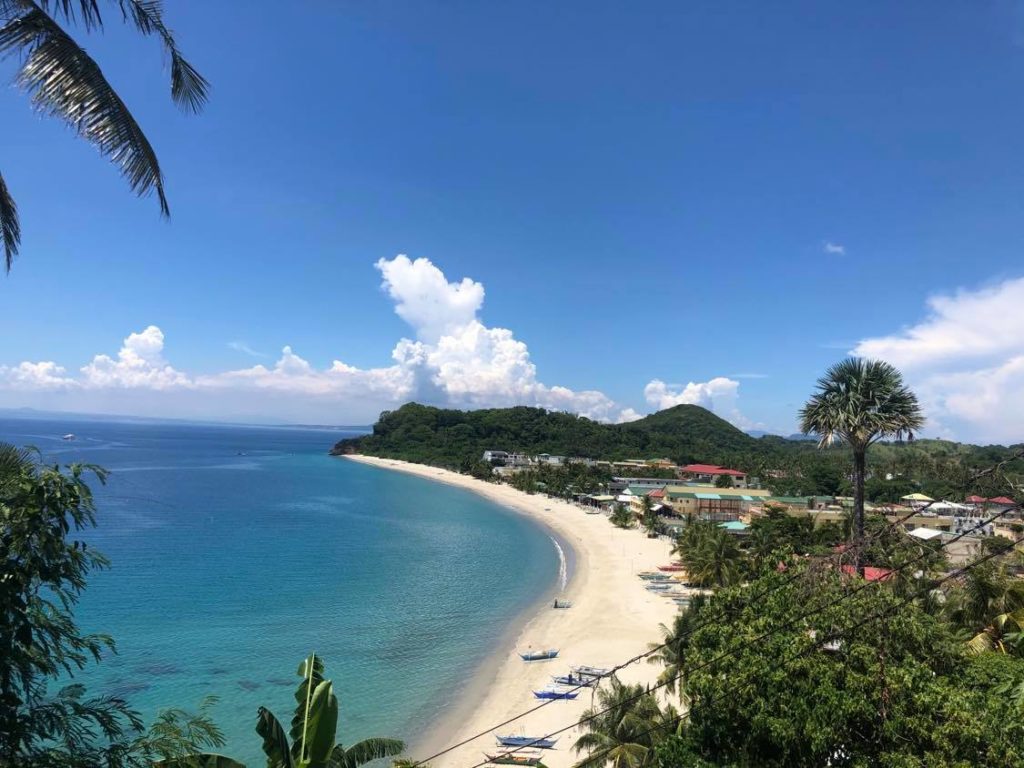
About a fifteen minute scooter ride from the bottom of Ponderosa Viewpoint, lies White Beach; which has the best and most spacious beach around, bigger than any of those on the Sabang peninsular.
There’s a number of palm trees towards the back of this beach, ideal for providing shade if you want to make a whole day of it. Behind the palm trees, lie many restaurants, bars and even tattoo stands. This place can get quite lively at night!
The sea here is nice to swim in, but you won’t see much if you snorkel as there’s mostly just sand. However, White Beach is the best place to go if you actually want a whole beach day and/or feel like trying some different bars and restaurants to what Sabang has to offer.
3) Tamaraw Falls
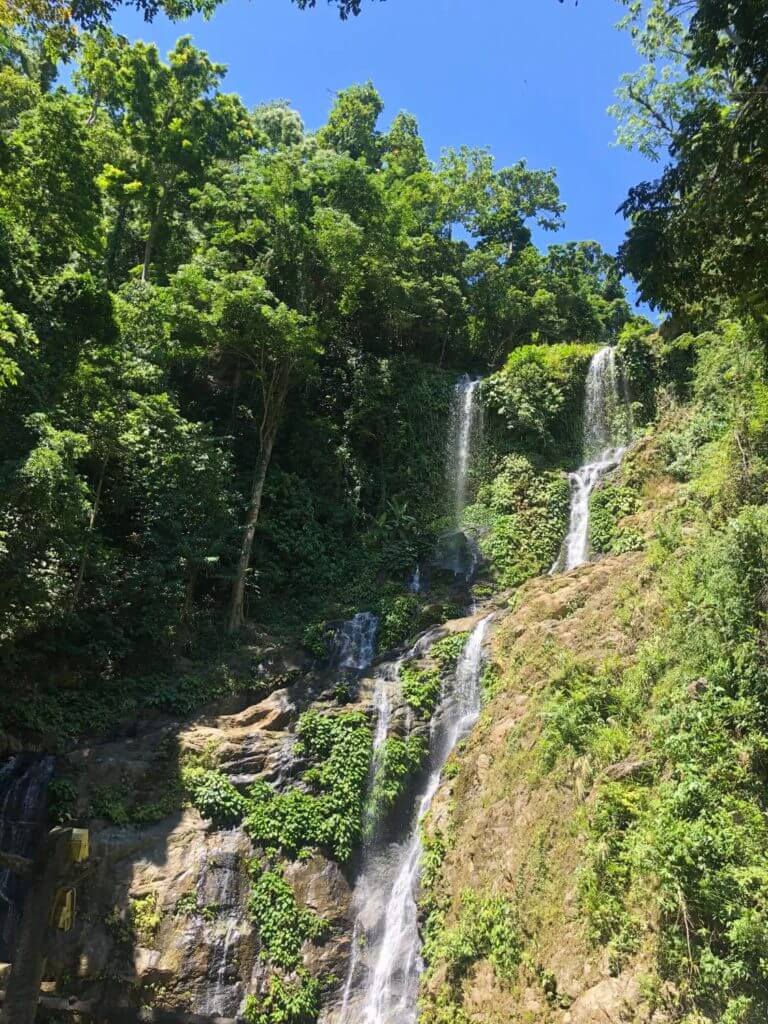
Named after the endangered Tamaraw Water Buffalo which lives on Mindoro island, Tamaraw Falls is a pretty nice waterfall that cuts directly through the hilly rainforest that rises directly up from the side of the road that you ride along to reach it.
It lies in the opposite direction to Ponderosa viewpoint and White Beach, and probably takes about 30 minutes via scooter from the Sabang Peninsular.
The waterfalls themselves are pretty decent – I’ve seen mightier ones but it’s a very scenic ride here with a lot of superb vantage points looking out across the sea and the various lush and rugged landscapes of Mindoro.
4) Mount Halcon
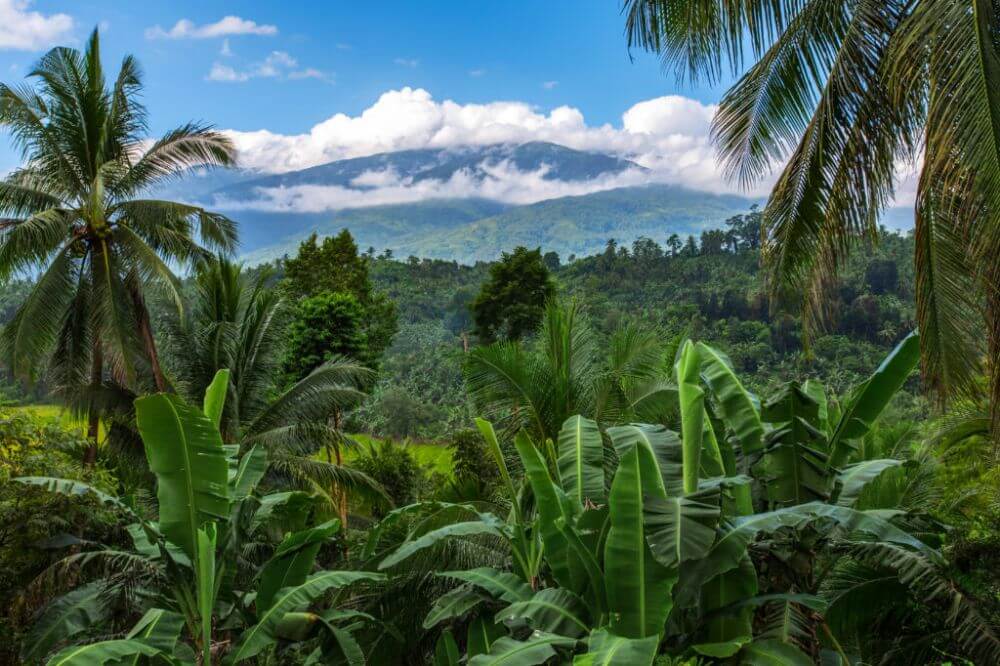
So far, you could do Ponderosa Viewpoint, White Beach and Tamaraw Falls all in a day and still be back to Sabang in time for tea.
But if you want to level things up and get more extreme, why not spend several days trekking up Mount Halcon which is the highest point in Mindoro at 2,586 meters tall and home to the indigenous Alangan Mangays as well as an alleged Japanese World War 2 hideout.
This is a notoriously difficult mountain to climb due to it’s steep elevation and rugged terrain but the epic views at the top are well worth it.
The climb generally takes 2 -4 days, depending on the pace you want to set – you’ll definitely need to hire a guide for this one, which your resort can arrange for you.
5) X-Treme Sports Centre with Zombies
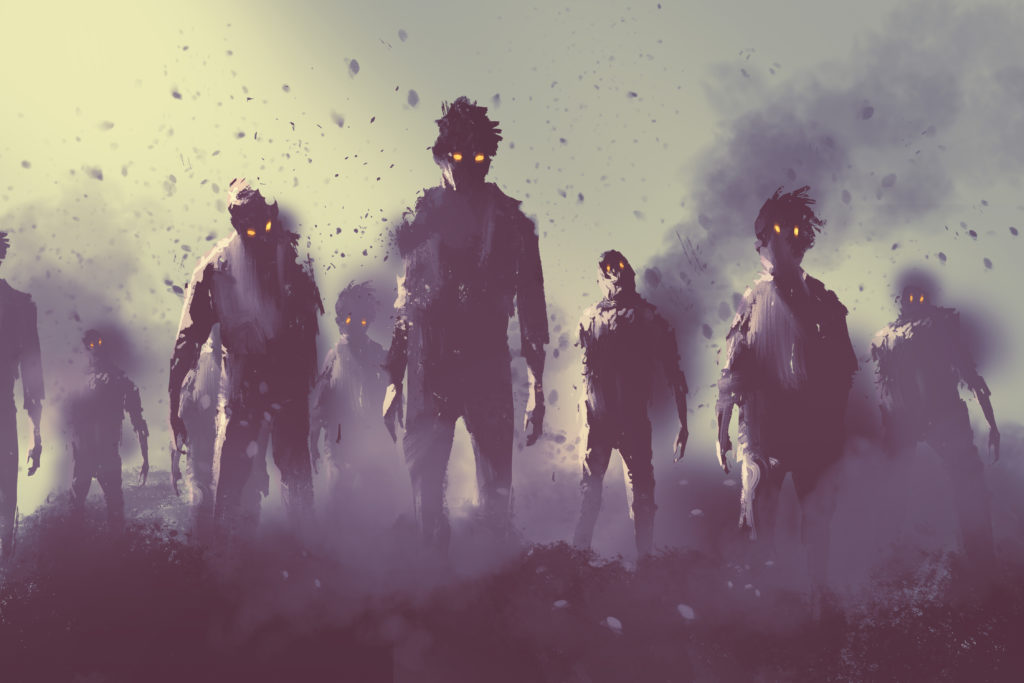
I couldn’t resist this one. Just a 5 minute scooter ride from sabang village lies one of the Philippines famous X-Treme Sports Centres with it’s own firing range – and at this one, the targets are zombie themed. Nice!
This is a great way to blow off some steam and practice for the inevitable day when the dead rise up and walk the earth. If firing rifles and pistols at zombies gets boring, you can always try your hand at using one of the real crossbows that they have.
There’s also paintball, archery tag, go-karting, zorb-ball, jungle camping and an off road adventure track on the cards.
Cost of Puerto Galera
If you’re looking for ultra cheap accommodation, it’s going to be difficult to find because Puerto Galera has virtually no backpacker hostels.
There are a few homestays, but these are generally not on the Sabang peninsular and many are up to 30 minutes drive away from all fo the dive centres, with very limited nearby food options.
However, PG diving is some of the cheapest in all of southeast asia, with the average cost of a fun dive coming in at $30 – with package discounts also available in some Puerto Galera dive centres. Beers are usually $1 and food is very affordable as well.
Whilst some resorts are luxury stay only, others offer a range of accommodation options.
In my opinion, whether you’re looking to splash out or go as cheap as possible, your best option is Scandi Divers Resort– they offer the best range of accommodation choices from huge suites with private balconies overlooking the sea to budget beach huts – all of which are located on Big Lalaguna, which is by far the best location.
Furthermore, Scandi Divers offer 10% food and drinks discount to all guests as well as bulk discount deals when you book lots of dives together. Click here to find out more about Scandi Divers!
Or read on, to discover about the Puerto Galera nightlife and why it’s like a magical beacon to some travellers, but a strong repellent to others….
Puerto Galera Diving Squad DEBRIEFING:
And there you have it Diving Squad. Everything you need to know about what makes Puerto Galera diving unique, how to get the most out of your scuba adventure there, where to stay, when to go, how to get there and other things to do!
Don’t forget that for more information you can check out the epic saga I wrote about my 6 month stay in Puerto Galera during 2020’s covid-19 pandemic as well as check out the first ever Diving Squad movie, to see just how awesome Puerto Galera diving can be!
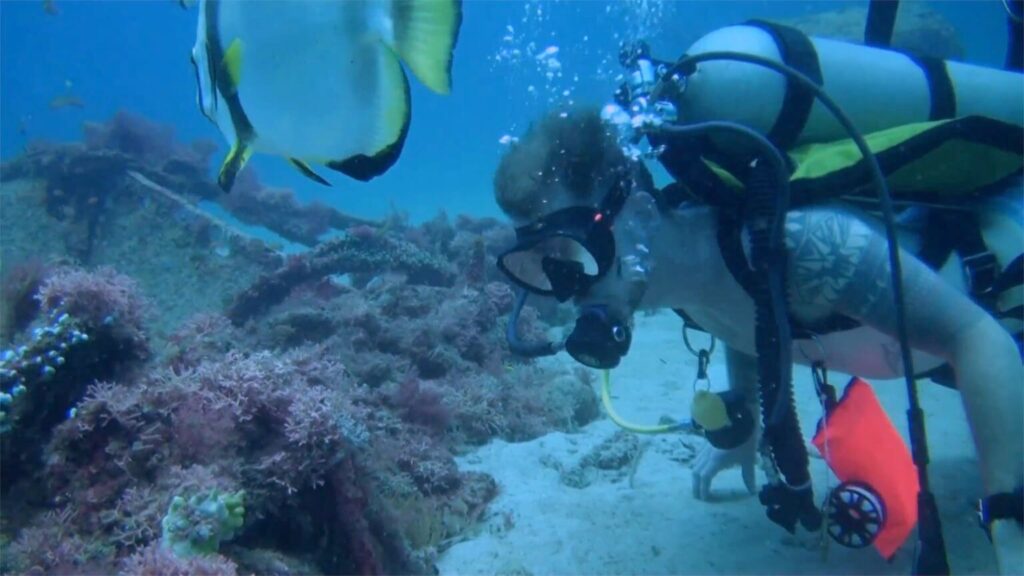
Related Reads:
Support the Squad!
Some of the links in our content are affiliate links. This means that if you buy a product, book a liveaboard, book accommodation or purchase insurance, we earn a small commission at no extra cost to you. Thanks!
